The ultimate 3 week Malaysia itinerary (including Borneo!)
Some links in this post are affiliate links, which means I earn a small commission if you book through them, at no extra cost to you. This support helps keep this site running, the suitcase wheels spinning, and lets me keep writing ultra-detailed travel guides that are free for you to use to plan your next adventure.
Looking for a 3 week Malaysia itinerary that includes city breaks, culinary hot spots, paradise islands and outdoor adventures? This three week Malaysia & Borneo itinerary is the answer!
Planning a three week Malaysia itinerary can feel overwhelming, there are too many epic places to explore, and sorting out how to get from A to B isn’t always straightforward.
After spending six weeks zigzagging through the cities, islands and jungles of Malaysia as a solo traveller, I’ve streamlined the highlights of my trip into the ultimate three-week itinerary, visiting both Peninsular Malaysia and the state of Sabah in Malaysian Borneo.
I’ve even researched all the best transport and tour options, so you don’t have to waste your time getting bogged down in the logistics.
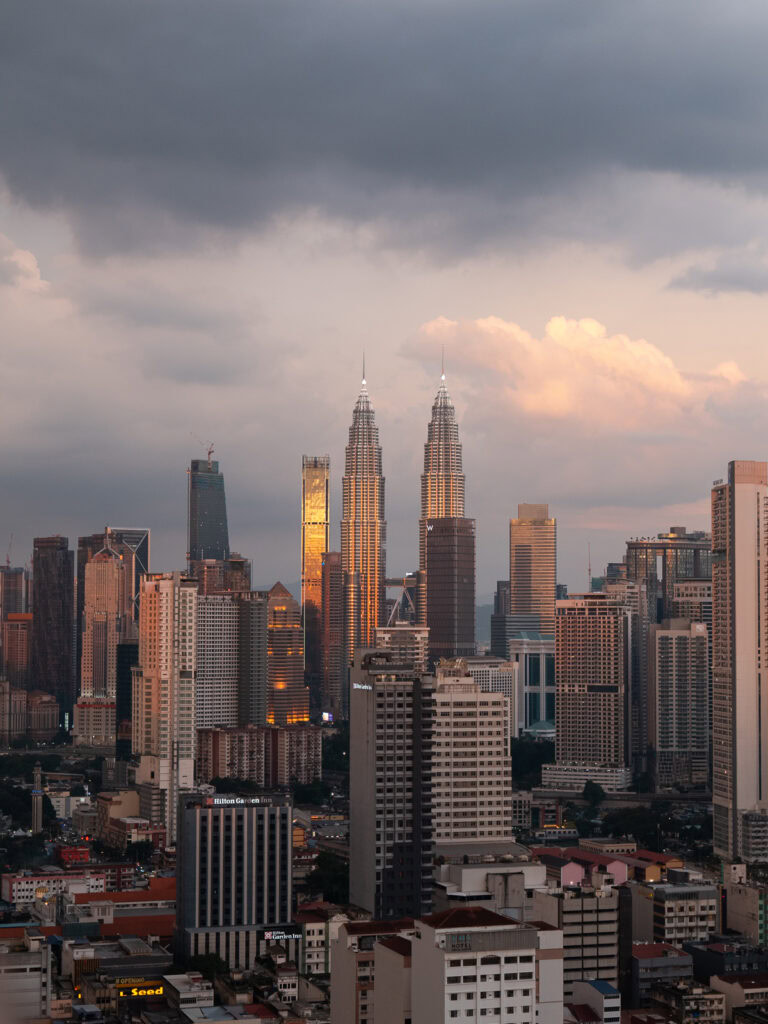
With this itinerary for 3 weeks in Malaysia you’ll get to experience buzzing cities, rich culture, heavenly street food, and unique wildlife, with some dedicated island time set aside too. It combines Malaysia’s best experiences into one smooth journey, ticking off bucket list moments in Kuala Lumpur, Ipoh, George Town (Penang), and the best bits of Sabah in Malaysian Borneo.
So whether you’re wanting to eat your way around street food markets, come face to face with endangered animals, or immerse yourself in local culture, this Malaysia travel guide has got you covered. Let’s get into it!
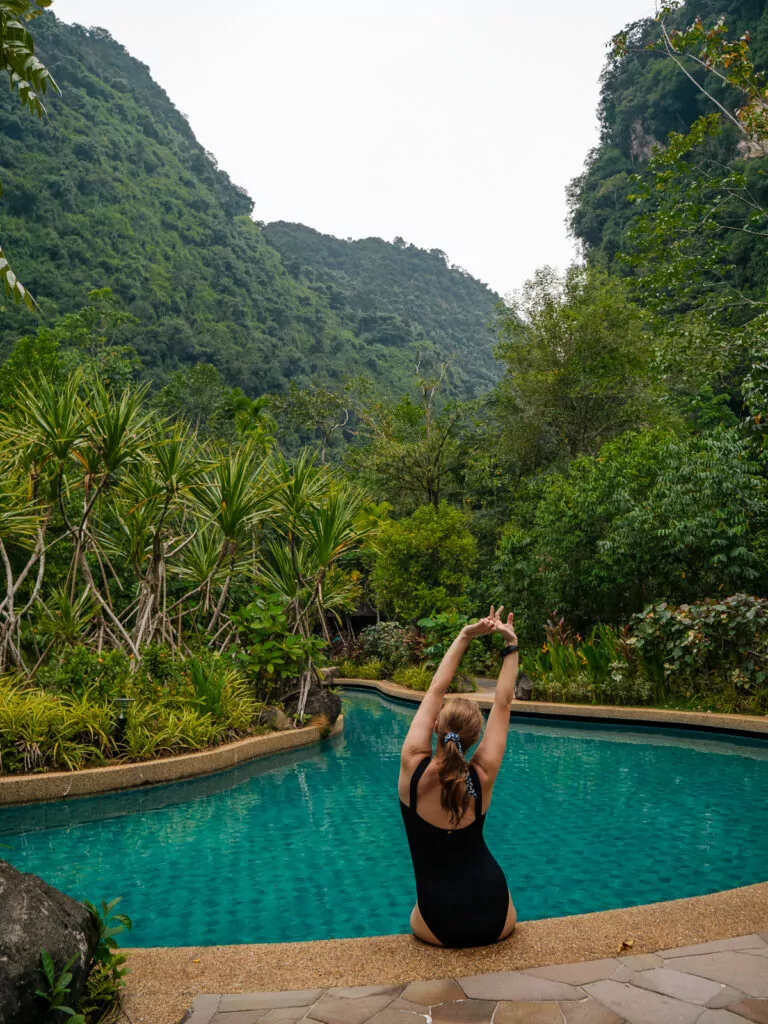
Table of Contents
Quick summary: 3 weeks in Malaysia & Borneo
Malaysia & Borneo itinerary map
A summary of the three week Malaysia & Borneo itinerary
- 3-4 days in Kuala Lumpur
- 2-3 days in Ipoh
- 3-4 days in Penang
- 1-2 days in Kota Kinabalu
- 3 days in Kinabatangan River
- 1-2 days in Sepilok
- 5-6 days in Semporna/Sipadan
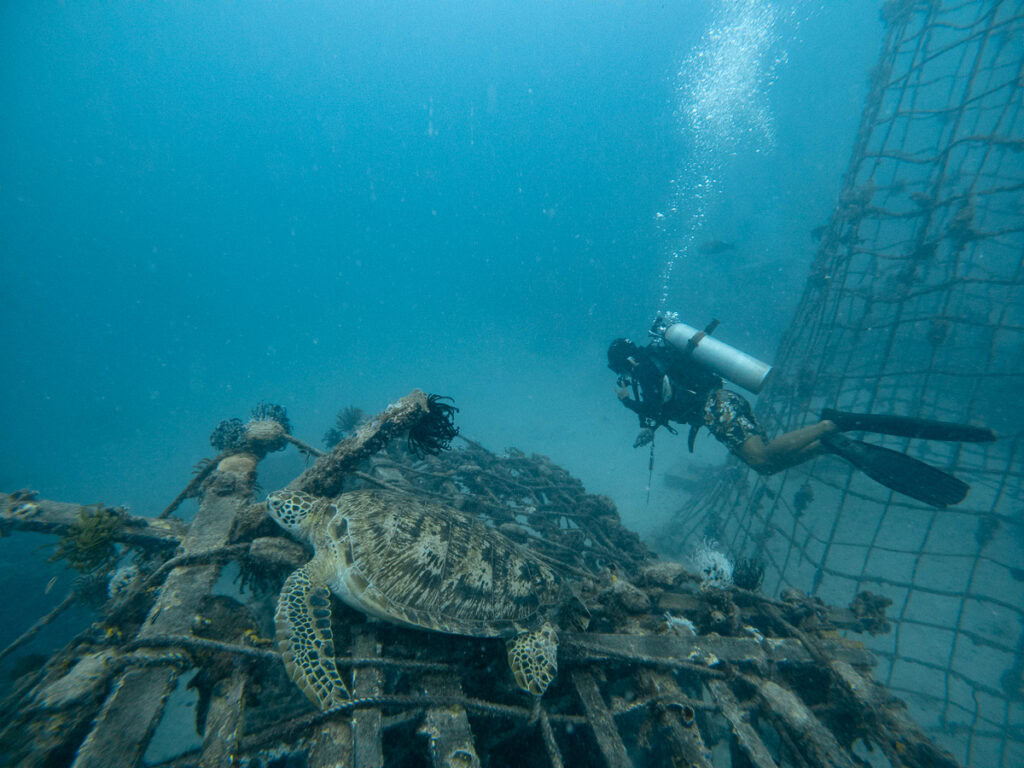
Planning your three weeks in Malaysia & Borneo
Where is Malaysia?
Malaysia is a country in Southeast Asia, split between two main regions:
- Peninsular Malaysia: Situated south of Thailand and north of Singapore, and home to the most popular tourist destinations in Malaysia, like Kuala Lumpur, Penang and Langkawi.
- Malaysian Borneo: Located across the South China Sea to the east of Peninsular Malaysia, Malaysian Borneo covers some of the island of Borneo, and it’s split into two states: Sabah and Sarawak.
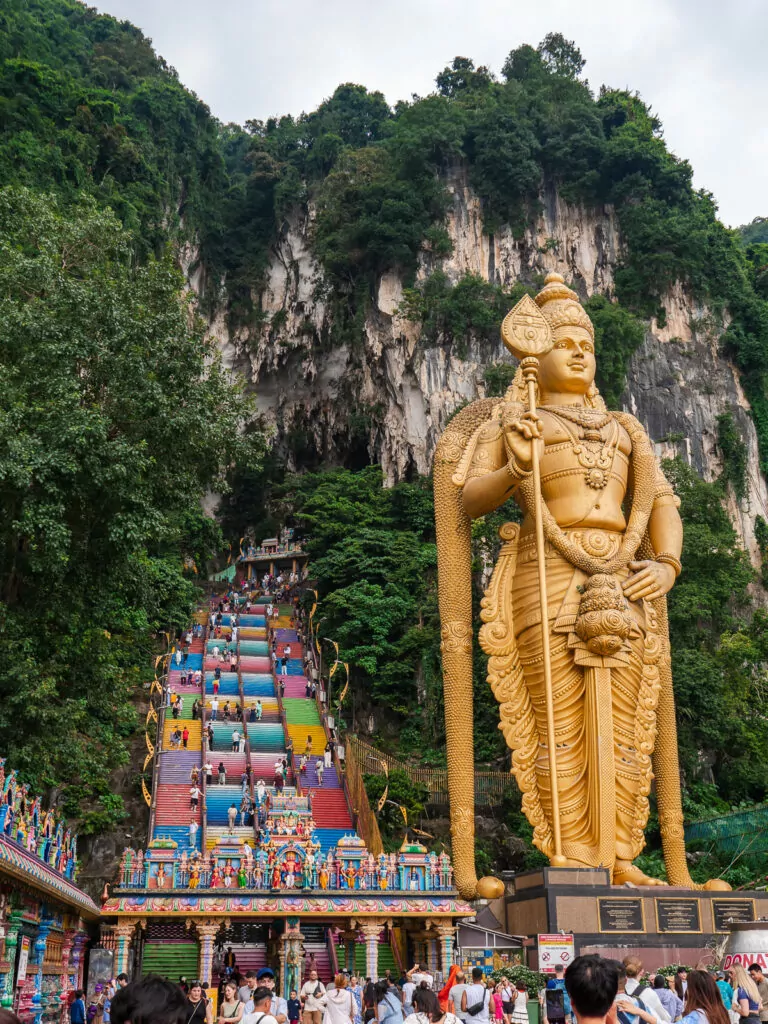
So Borneo is a part of Malaysia?
Some of it is!
The island of Borneo is actually shared between three countries: there’s Malaysian Borneo, Indonesian Borneo, and the tiny independent nation of Brunei.
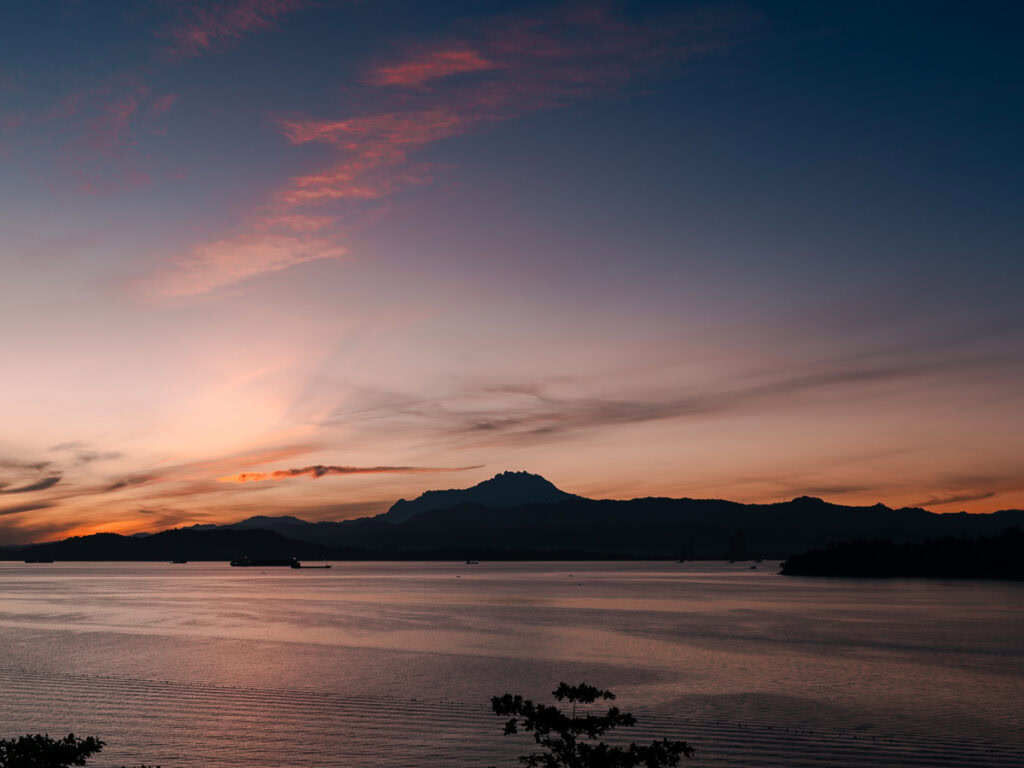
When is the best time to visit Malaysia?
The best time to visit Malaysia totally depends on where you’re going, and if you’re visiting a couple of different regions then there’s no perfect time of the year that gets you the best weather everywhere you go, but here are some typical weather patterns to keep in mind:
- Kuala Lumpur has the best weather from June to August and December to mid-February, though afternoon thunderstorms are common year-round. March to May are the hottest months of the year, and November is the rainiest.
- The west coast of Peninsular Malaysia (Penang, Langkawi) is impacted by the southwest monsoon between September and November so these months can get super rainy, but it’s hot and humid year-round.
- The east coast of Peninsular Malaysia (Perhentian Islands) is impacted by the northeast monsoon from November to February, and the islands pretty much shut down. The best time to visit is between March and October.
- Malaysian Borneo is a year-round destination, with wildlife spotting opportunities throughout the seasons, and tropical downpours can happen at any time. The dry season is from March to October and is ideal for trekking and scuba diving, but July and August get busy busy busy. November to February is the wet season which can impact some outdoor activities and scuba diving visibility, but it also means less people and lower prices.
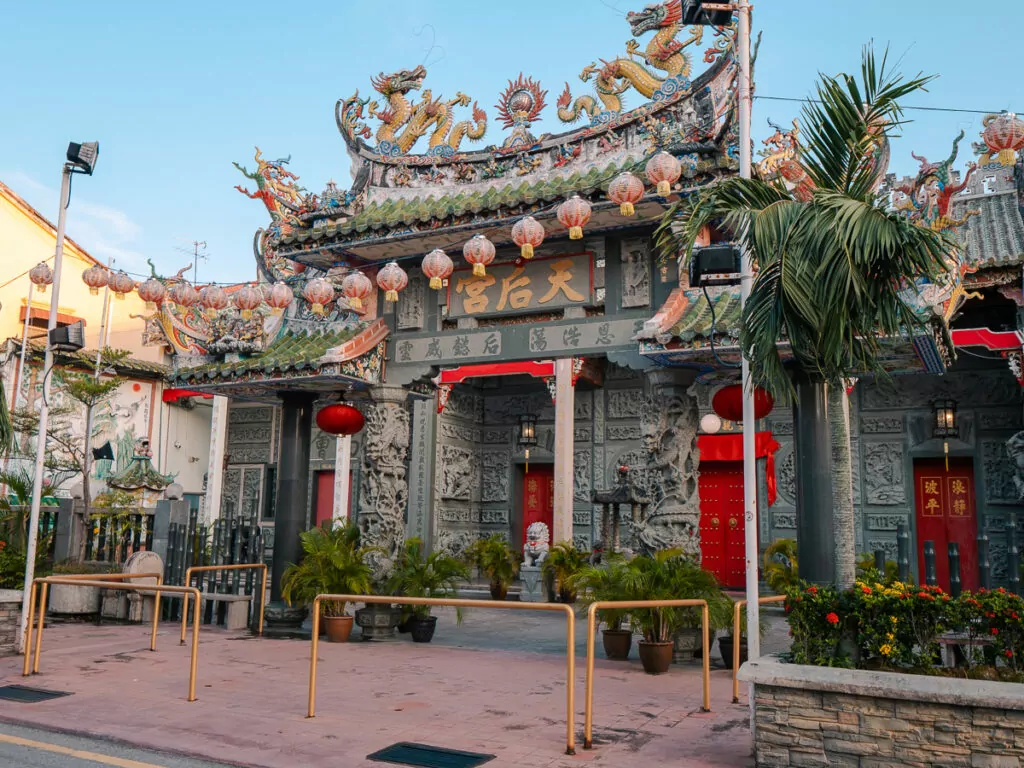
How to get around Malaysia
🚄 To get between the stops in Peninsular Malaysia in this itinerary (Kuala Lumpur, Ipoh and Penang), I’d recommend catching the train, which services all three stops. It’s comfortable, efficient and affordable, just be sure to book in advance if you’re planning on travelling at peak commute time.
🚍 There are buses between those spots too, they’re generally cheaper but take longer due to winding roads and traffic.
🎟️ You can book train and bus tickets in Malaysia at 12Go >>
✈️ To get from Peninsular Malaysia to Malaysian Borneo, you’ll need to fly. You can find cheap flights with budget airlines like AirAsia or BatikAir.
🚌 To get around Malaysian Borneo, you could book a small group tour, catch local buses, book private drivers, or jump on domestic flights between Kota Kinabalu, Sandakan (for Sepilok) and Tawau (for Semporna). I’ve explained the options for each route in the different destination sections, and I’ve got a more detailed breakdown of transport in my Borneo itinerary.

How much to budget for three weeks in Malaysia
Average prices in Malaysia really vary between destinations, but here’s a rough guide to help you plan your budget.
🛌 Accommodation: Hostel dorms from $5-15USD, budget hotels or homestays from $15-30USD, 3* hotels and average apartments from $25-30USD, and nicer apartments or hotels from $30-60USD. 5* hotels from as low as $70USD per night in Kuala Lumpur! Borneo prices and anywhere that’s super touristy will be slightly higher than big cities like Kuala Lumpur.
🚐 Transport: Expect to pay $5-20USD for long bus or train journeys, domestic flights from as little as $20USD (not including checked baggage), Grab (ride-hailing app) very affordable for getting around cities.
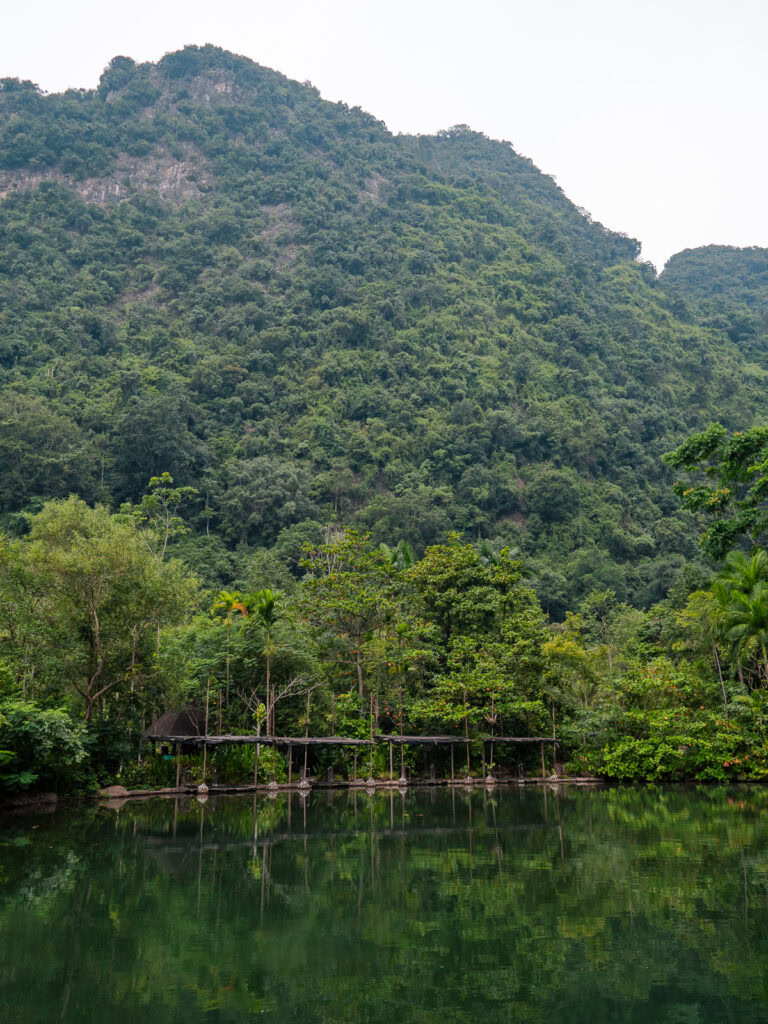
🍜 Food: Cheeeeap! You could eat for $5-10USD per day if you’re happy with street food stalls, local restaurants and fresh fruit from markets, sit-down meals at Western-style restaurants start from $8-12USD, even a fancy dinner out will be half the price of what you’d find in Europe, North America or Australia/New Zealand.
🎟️ Activities: Many popular things to do in Peninsular Malaysia are free or very cheap, like Batu Caves, street art murals, mall-hopping, KLCC Park, the Habitat at Penang Hill, and KL Tower. Day tours in a shared group in Peninsular Malaysia and Malaysian Borneo range from $30-70USD, more if you want a private booking. Bucket list activities like jungle treks, river safaris, scuba diving etc. make a bigger dent in your budget, upwards of $80USD per day.
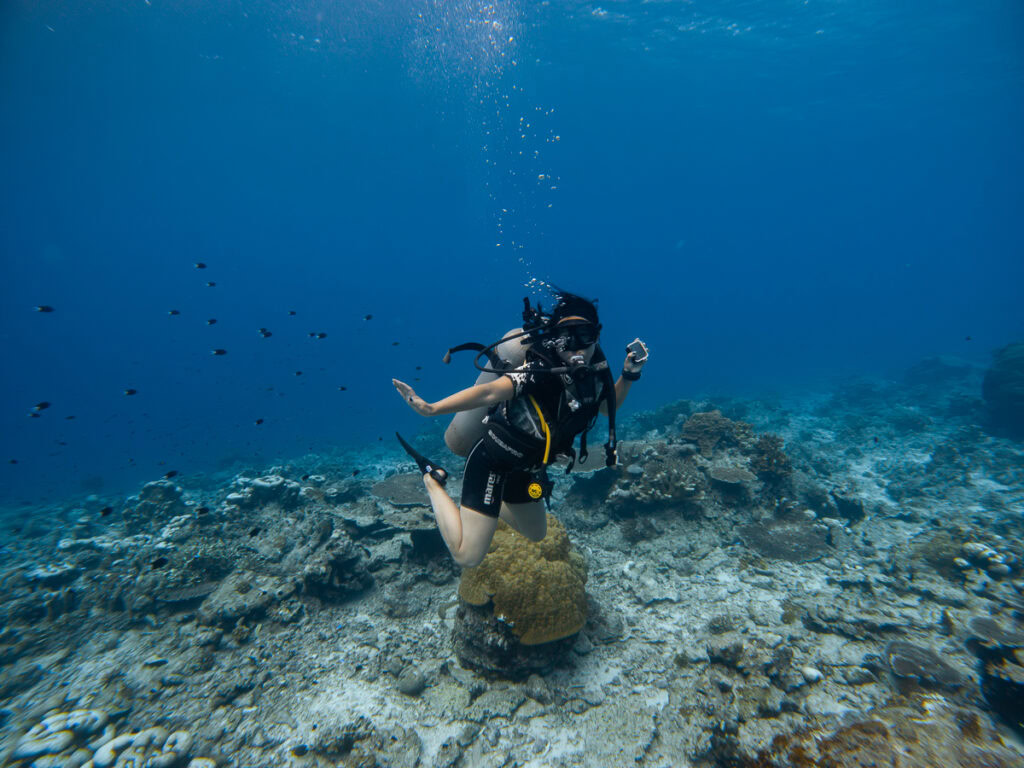
Budget travel tips for Malaysia
📶 Get an eSIM! I use MobiMatter for all my eSIMs while travelling, they’re always LOADS cheaper than Airalo and Holafly (the two eSIM brands you’ve probably seen sponsored posts for), and you can get extra cashback on your first SIM with the promocode FINDINGALEXX
💰 I’ve got two more promocodes for you too, and you can use these on almost every tour and experience I’ve mentioned in this Malaysia itinerary:
- You can save 10% on your first booking with Klook using the promocode FINDINGALEXXKLOOK
- And you can save 10% on your first booking with KKDay with the promocode FINDINGALEXX
Both of these are leading providers for travel experiences in Southeast Asia, and you can book things like attraction tickets, city tours, multi-night trips and airport transfers, either on their websites or their apps.
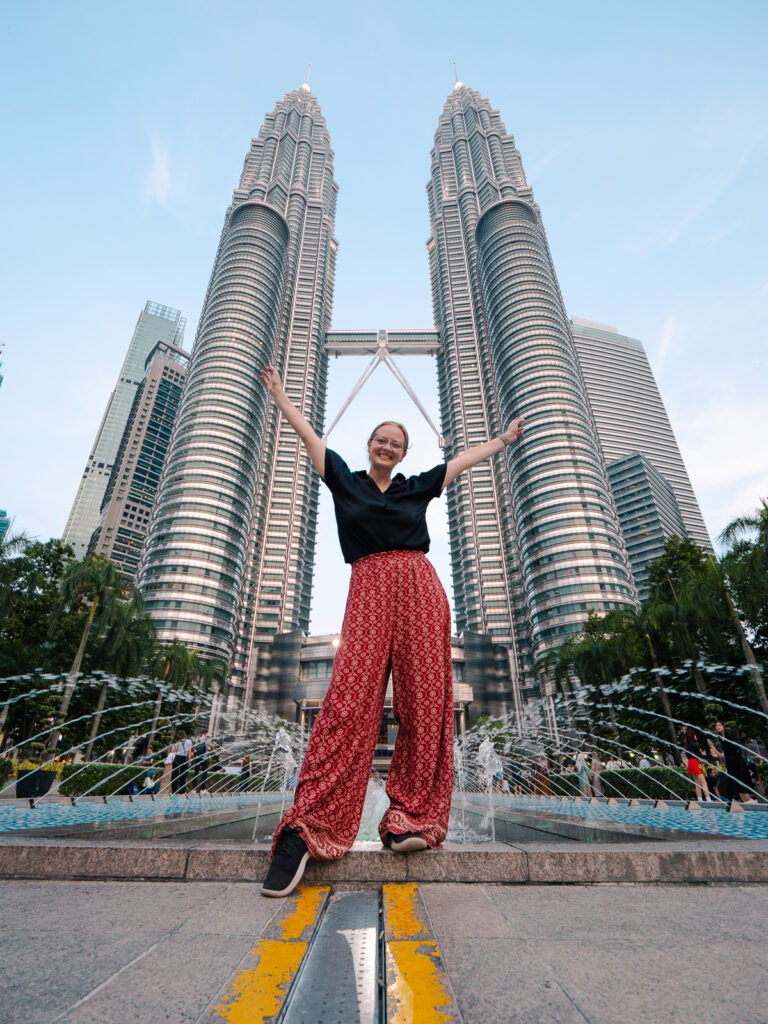
💳 Use a travel card with no fees, I use a Wise card for all my daily spending around the globe
🚅 Book the KLIA Ekspres train to get from Kuala Lumpur Airport to the city, it’s cheaper than a taxi and it gets you there quickly and comfortably (and you can get 10% off with the promocode FINDINGALEXX)
🍜 Eat at local markets
🏠 Stay at guesthouses, hostels or homestays
✈️ Book domestic flights in advance, prices do jump up if you book last minute. Find the best travel times and cheapest flights with Skyscanner.
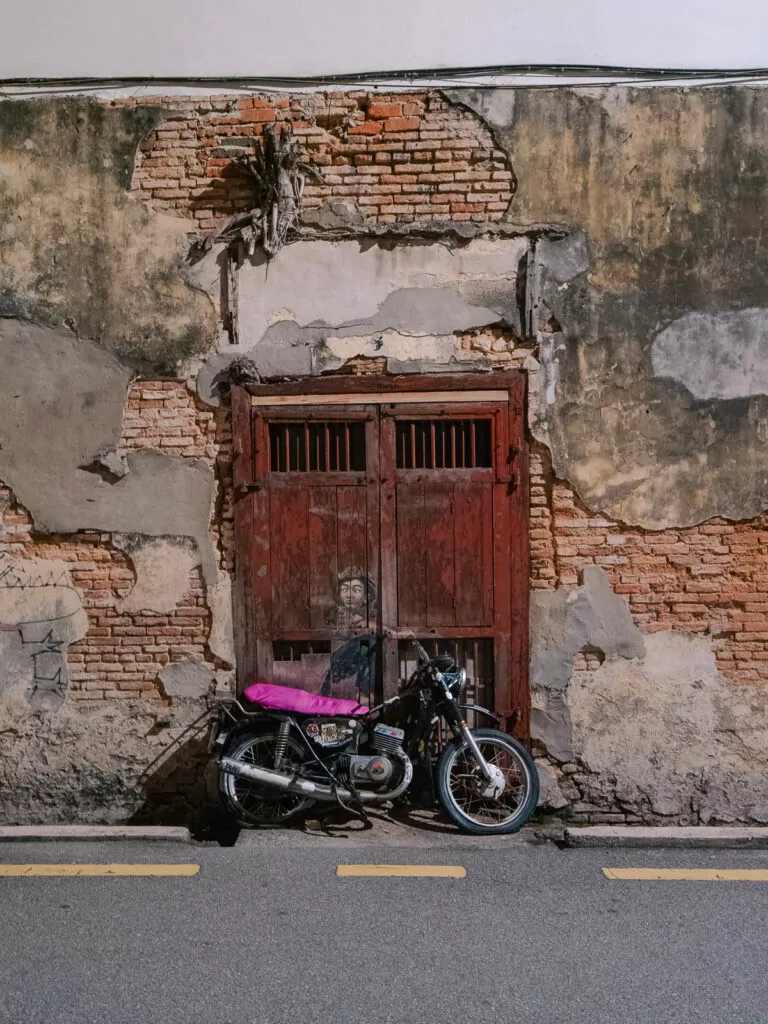
The ultimate three week Malaysia itinerary
Who is this Malaysia itinerary for?
This itinerary is perfect for anyone keen to experience the key highlights of Malaysia in three weeks, balancing city breaks, ocean adventures and wildlife spotting. No need to rent a car or splurge on a private driver either, you can follow this exact trip using public transport with the option for some short organised tours.
It’s not too fast-paced, with 2-4 nights in most stops, but it does skip some popular destinations like Langkawi and Cameron Highlands in favour of more remote but absolutely worthwhile places (in my opinion) like Sabah in Malaysian Borneo.
The end of the Malaysian Borneo itinerary segment includes a chunk of time for scuba diving, so if you’re not already certified, this is the perfect opportunity to give it a go. If that’s not your thing then at the bottom of the blog I’ve listed some potential extensions/detours/swaps to fill your three weeks in Malaysia, so you can tailor the trip to suit your preferences. Too easy!
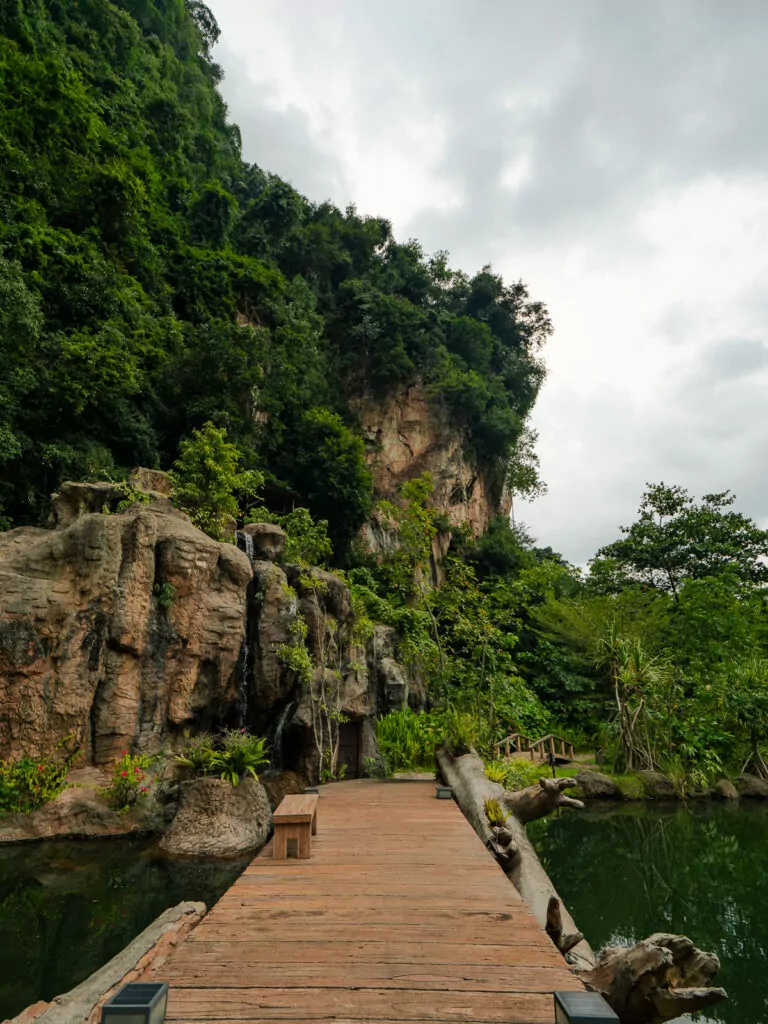
Kuala Lumpur
How to get there: Kuala Lumpur is one of Asia’s major transport hubs, you can find direct flights here from loads of countries around the world.
How long to stay: 3-4 days
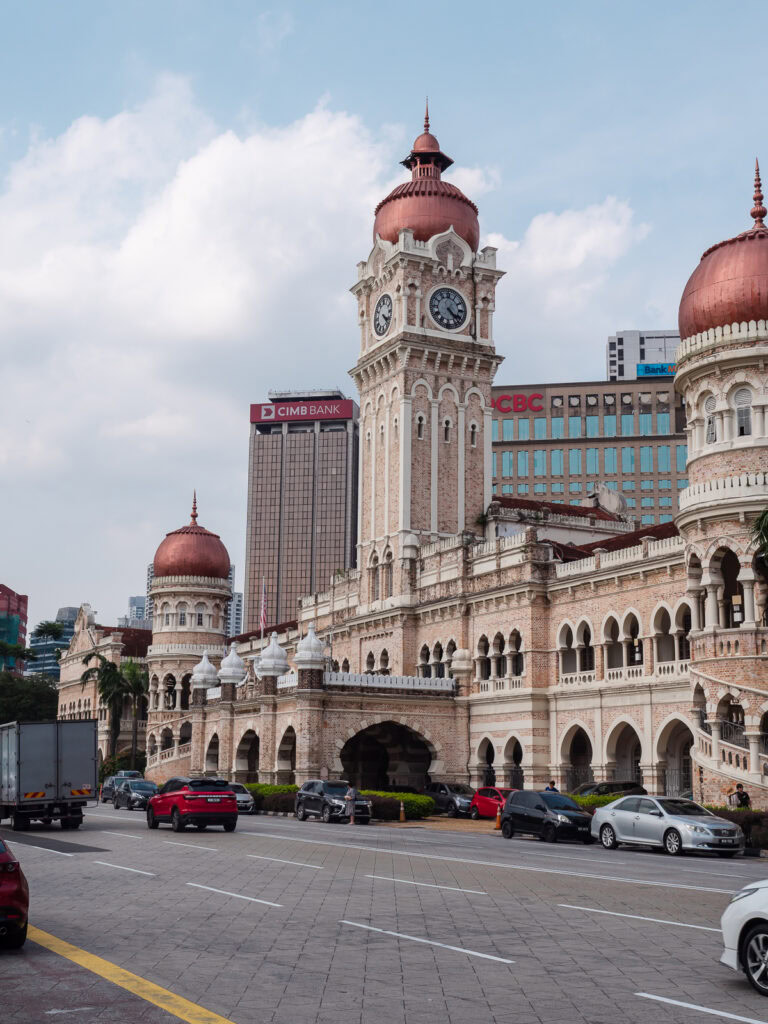
About Kuala Lumpur
I firmly believe that Kuala Lumpur (or ‘KL’ as it’s usually referred to) deserves more attention from travellers. It’s a world-class city with street food that rivals Bangkok, affordability that rivals Ho Chi Minh City, and shopping malls that rival Singapore, while also being safe and easy to navigate. The dream city break!
The city boasts a seamless fusion of old and new, a perfect combo modern technologies and rich cultural heritage from Malaysia’s varied past, and there’s plenty to see, do, eat and experience to build a Kuala Lumpur itinerary that’s tailored to you.
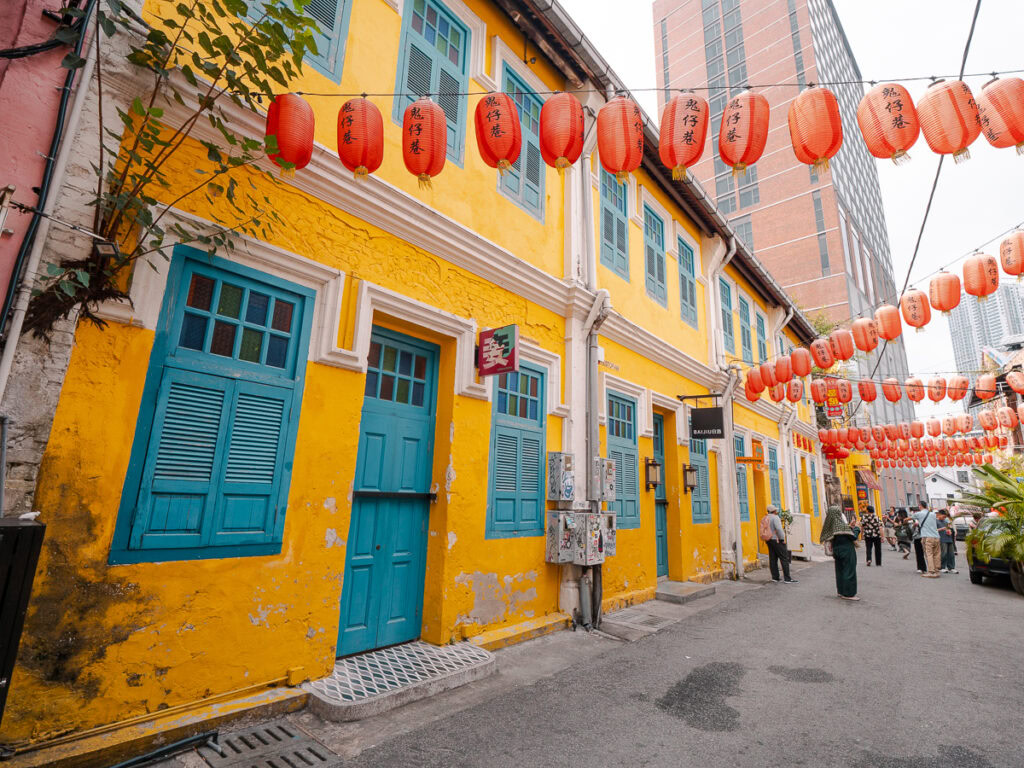
Things to do in Kuala Lumpur
- Climb the 272 rainbow steps at Batu Caves to marvel at the jagged limestone formations and spot cheeky monkeys
- Wander through Kwai Chai Hong for the best street art
- See the Petronas Towers, it’s free to visit the bottom of them for the classic photo, but tickets for the observation deck sell out days in advance so book early
- If you can’t get tickets to the towers, KL Tower also has an observation deck that offers epic views and is less likely to sell out
- Eat your way around the stalls at Jalan Alor Food Street with a group food tour
- Bargain hunt at Petaling Street market in Chinatown
- See the bright and beautiful temples in Brickfields (Little India) and stop off for some Indian sweet treats
- Visit the city’s key landmarks like Merdeka Square, the National Mosque, Istana Negara (King’s Palace) and National Monument
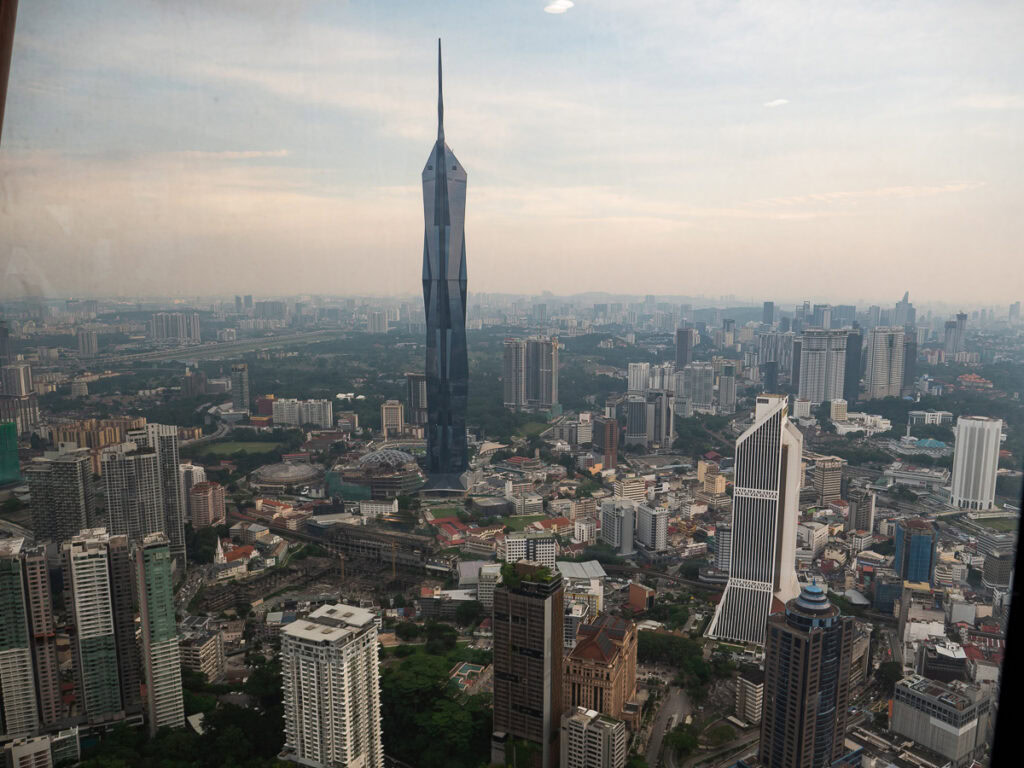
- Head to Bukit Bintang at night to watch it come alive
- Enjoy fresh air and green space at Perdana Botanical Garden
- Shop! Pavilion, Suria KLCC and The Exchange TRX are the best shopping malls, Plaza Low Yat has 7 floors of tech and gadgets, Central Market is best for independent gift shops and cute souvenirs, and Berjaya Times Square has a literal rollercoaster inside the shopping centre
Though Kuala Lumpur is cheap and fairly simple to navigate, the most efficient way to see the city’s main highlights is with an organised tour like this top-rated shared tour or this private tour. This way you can see most things in a single day and then take the other 2-3 days to indulge in the culinary scene, enjoy some retail therapy, or take a day trip to somewhere like the Genting Highlands, Putrajaya or Melaka.
See more things to do in Kuala Lumpur on KKDay >> (and save 10% with the promocode FINDINGALEXX)
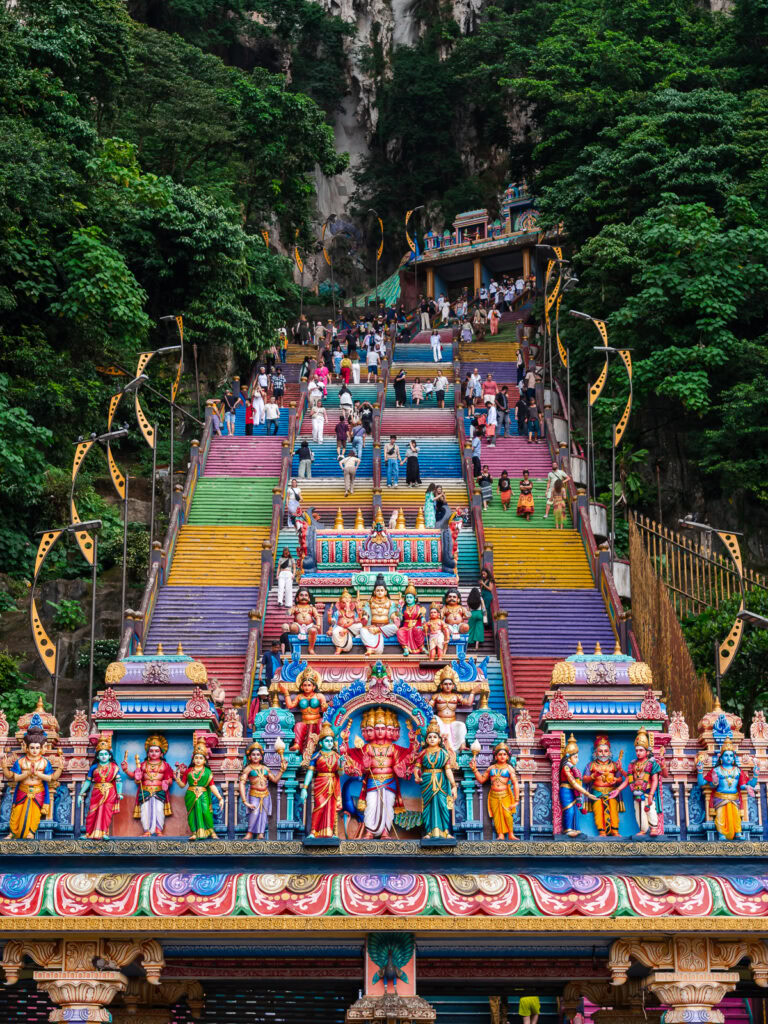
Where to stay in Kuala Lumpur
Budget:
- citizenM Bukit Bintang is my top pick for an elevated budget stay, ideal location with a bus stop right outside, comfortable private rooms and a chilled out but social atmosphere
- The Freedom Club is the best-rated hostel in KL
- OA The Factory Bukit Bintang is a cheap and cheerful social hostel with pod-style beds
- There are lots of super cheap apartments in KL from as little as $25USD a night, but just know that these are often in huge residential buildings like the Regalia or Chambers, so you’re sharing the facilities like infinity pools, gyms and the elevators with hundreds or sometimes thousands of other people. The photos also make them look much nicer than they are, speaking from experience! Worth the risk if you’re on a tight budget, just be sure to read the reviews carefully to know what to expect.
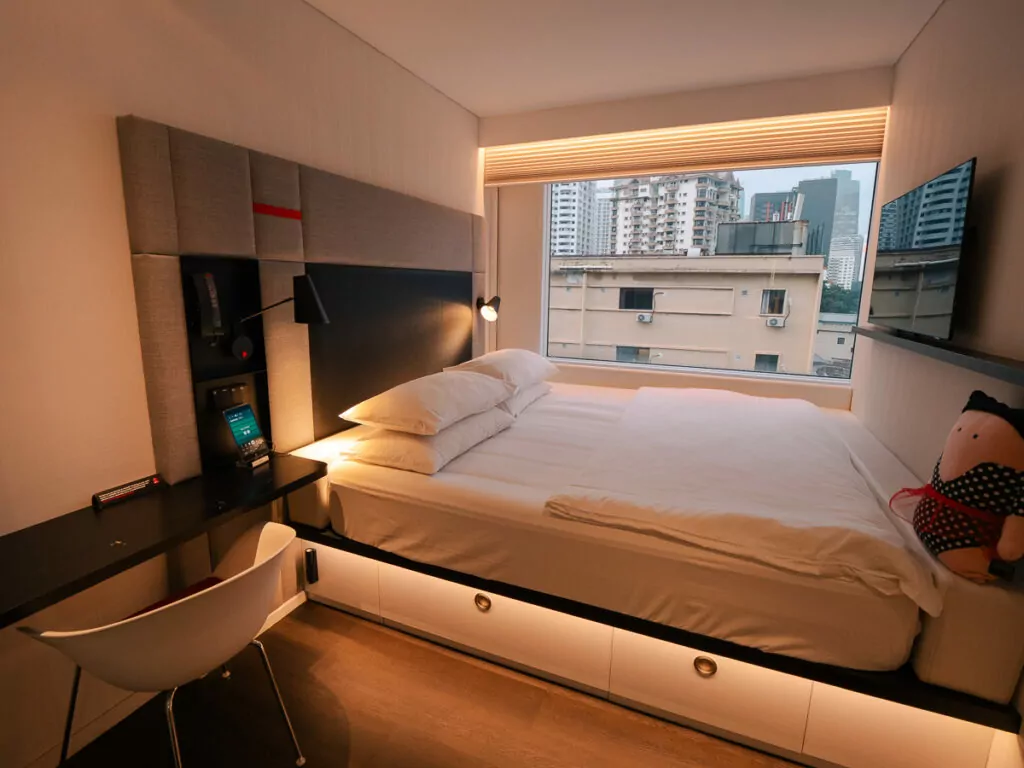
Mid-range:
- MoMo’s has simple but comfortable rooms in Chow Kit
- lyf Chinatown is ideal for solo travellers wanting a bit more than a hostel
- Santa Grand Signature is a top-rated 4* hotel
- KLoe Hotel is a stunning boutique hotel with epic artist lofts, this one is on my personal hotel bucket list!
Luxury:
- Lanson Place Bukit Ceylon Apartments are my faaavourite place to stay in Kuala Lumpur, with luxurious 1, 2 or 3 bedroom apartments at fantastic value. Loads of space, excellent facilities, very friendly staff, and KL Tower views from some apartments!
- The RuMa, EQ and Banyan Tree are the top-rated luxury hotels in Kuala Lumpur
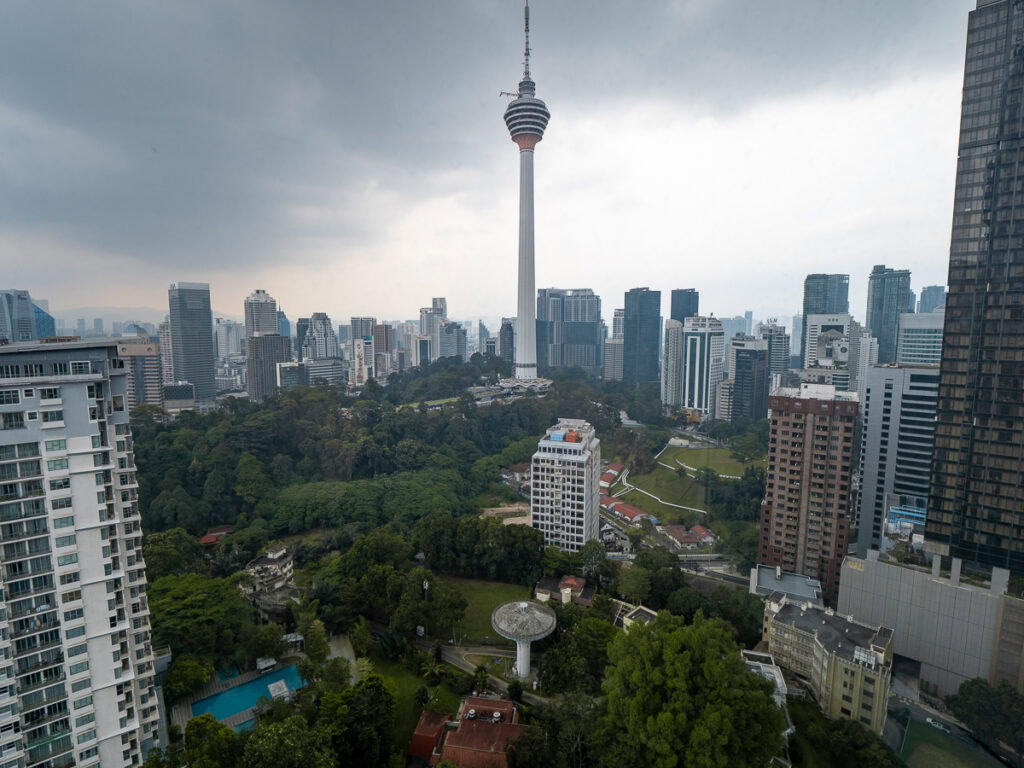
Ipoh
How to get there: Catch a 2-3h train or a 2-2.5h bus from Kuala Lumpur
How long to stay: 2-3 days
About Ipoh
Most travellers taking the overland route from Kuala Lumpur to Penang opt to head through Ipoh and on to the Cameron Highlands, but after visiting both, I’m 100% on Team Ipoh.
The culinary scene is on fire, the old town is authentic and charming, and it offers easy access to spectacular cave temples and Malaysia’s only geothermal hot springs.
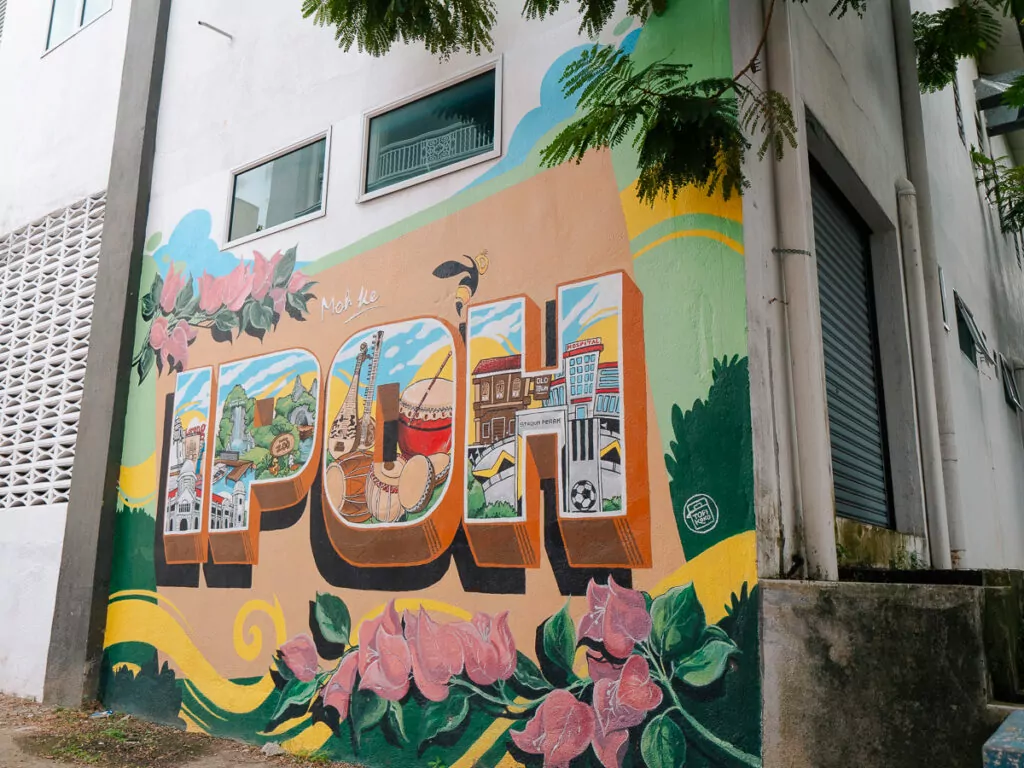
Things to do in Ipoh
- Learn about Malaysia’s colonial heritage with this suggested walking route
- Search for the hidden (and not-so-hidden!) murals in the old town
- Marvel at the insanely impressive cave temples of Kek Lok Tong, Sam Poh Tong, Perak Tong and more, tucked into ancient limestone cave complexes just out of the city
- Experience Ipoh’s famous coffee scene with a slow afternoon at a cafe
- Treat yourself to a day pass at Banjaran Hotsprings Retreat, a luxury wellness resort hidden amongst the rainforest. This place is reason alone to add Ipoh to your Malaysia itinerary!
- Trek the jungle in search of the largest flower in the world, the rafflesia
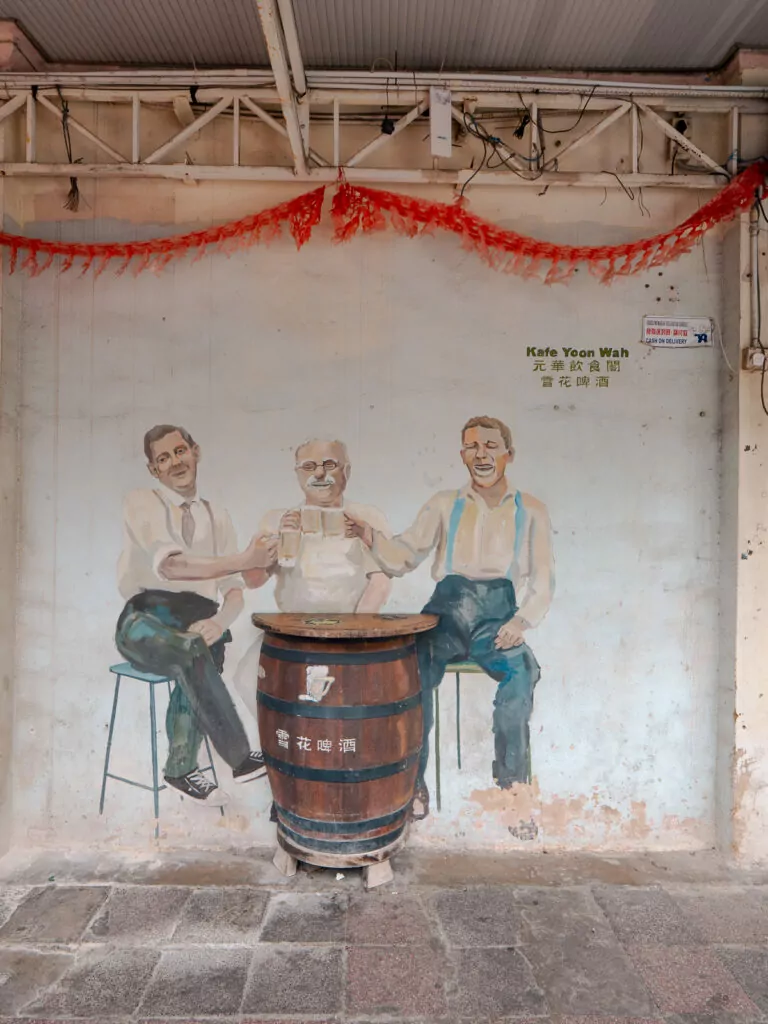
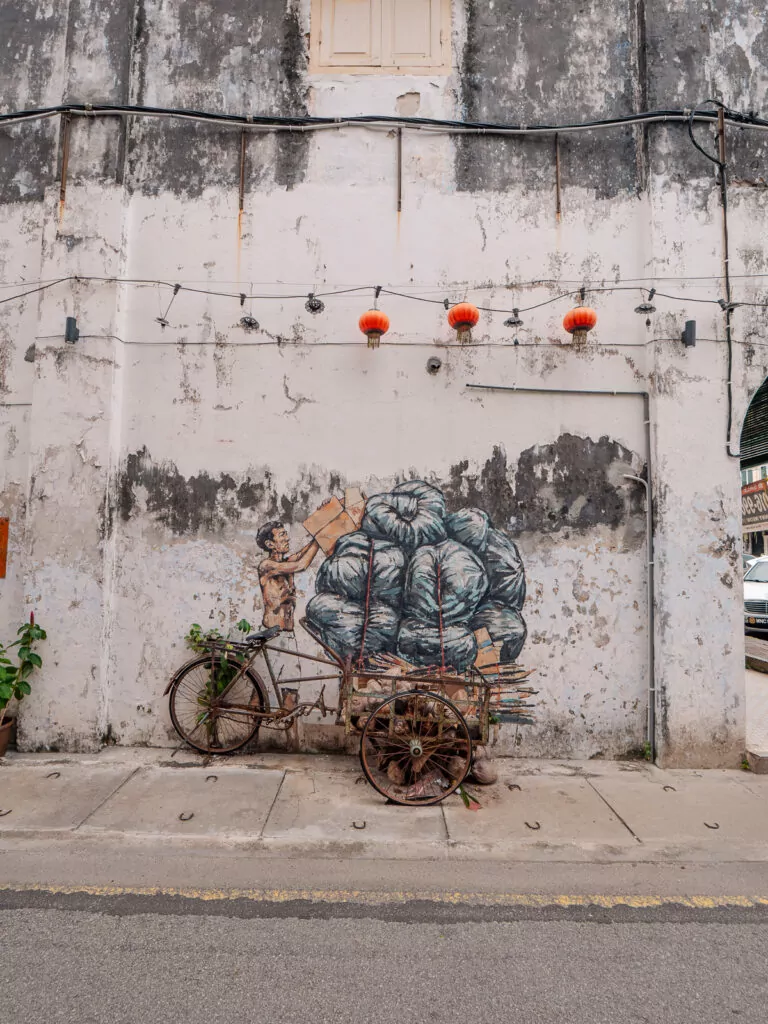
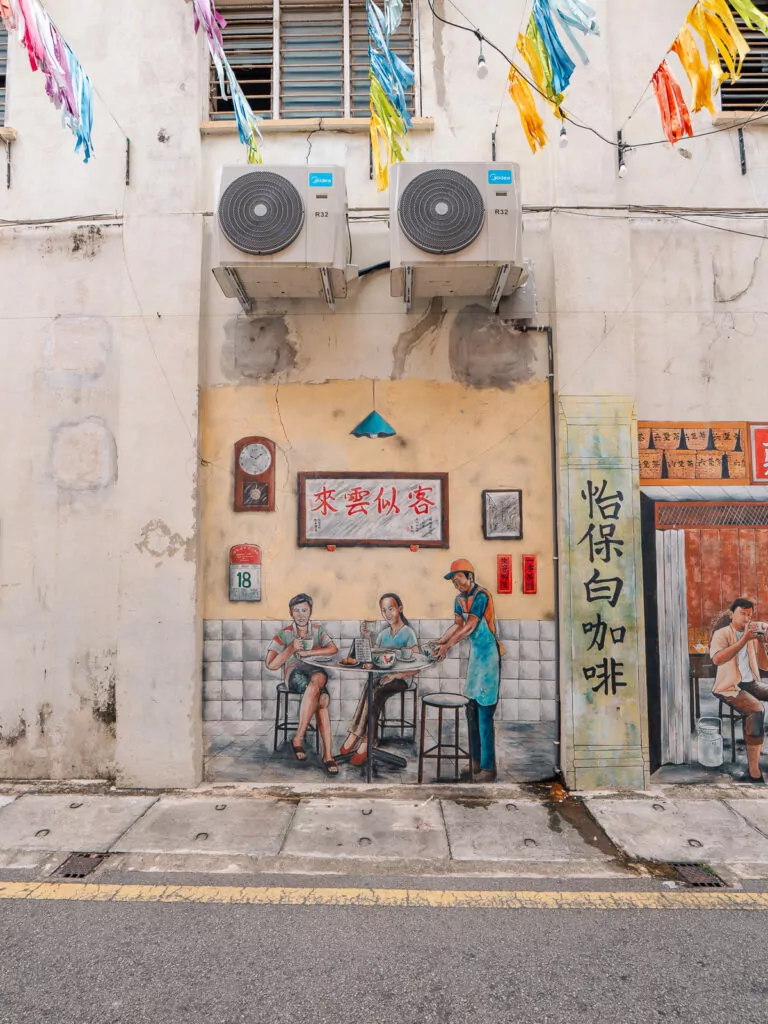
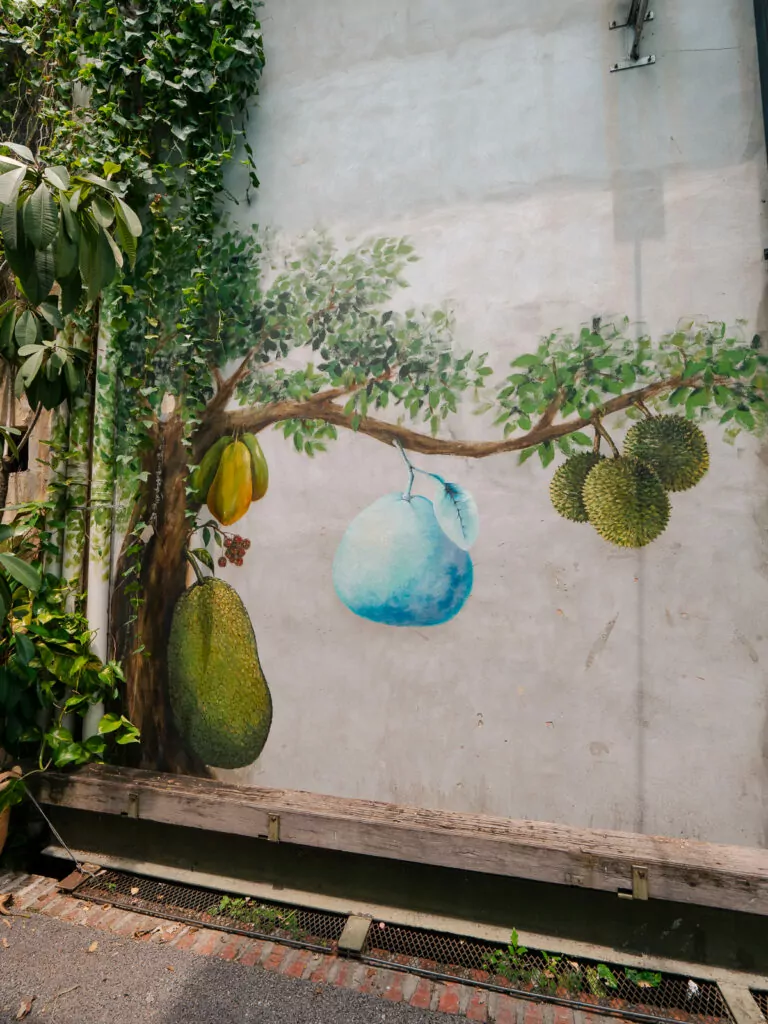
Where to stay in Ipoh
Budget:
- Dé Cafe & Rest House (cheap capsule beds close to the train station)
- The Brownstone Hostel (decent reviews, a really chill vibe)
- Jindagu Hotel (affordable rooms in a central location)
Mid-range:
- The Horizon (great value apartments and a rooftop pool)
- Ipoh Bali Hotel (Bali vibes, excellent reviews)
- Bedrock Hotel (best-rated 3* hotel in Ipoh)
Luxury:
- Nothing beats the Banjaran Hotsprings Retreat, my absolute favourite luxury hotel in Malaysia and one of the best I’ve ever stayed at. Each villa has a private pool and a geothermal hot tub, there’s a bunch of different pools and caves to visit around the resort grounds, you can join a meditation or yoga session with their in-house Guru, and the staff are absolutely brilliant. Actual perfection.
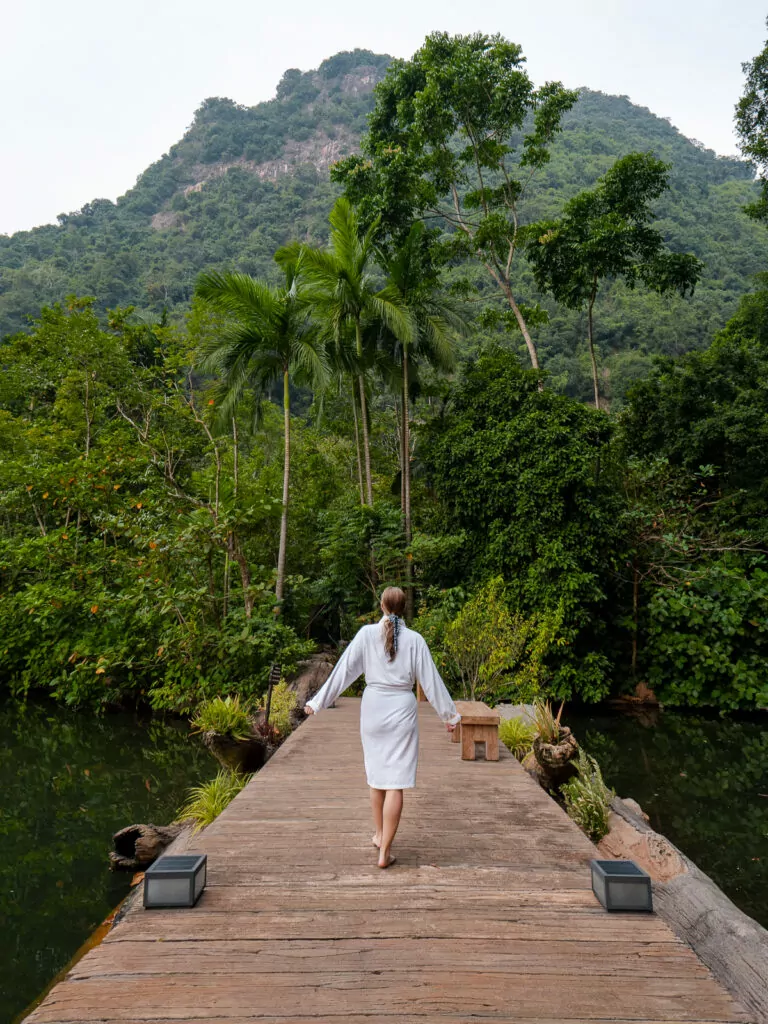
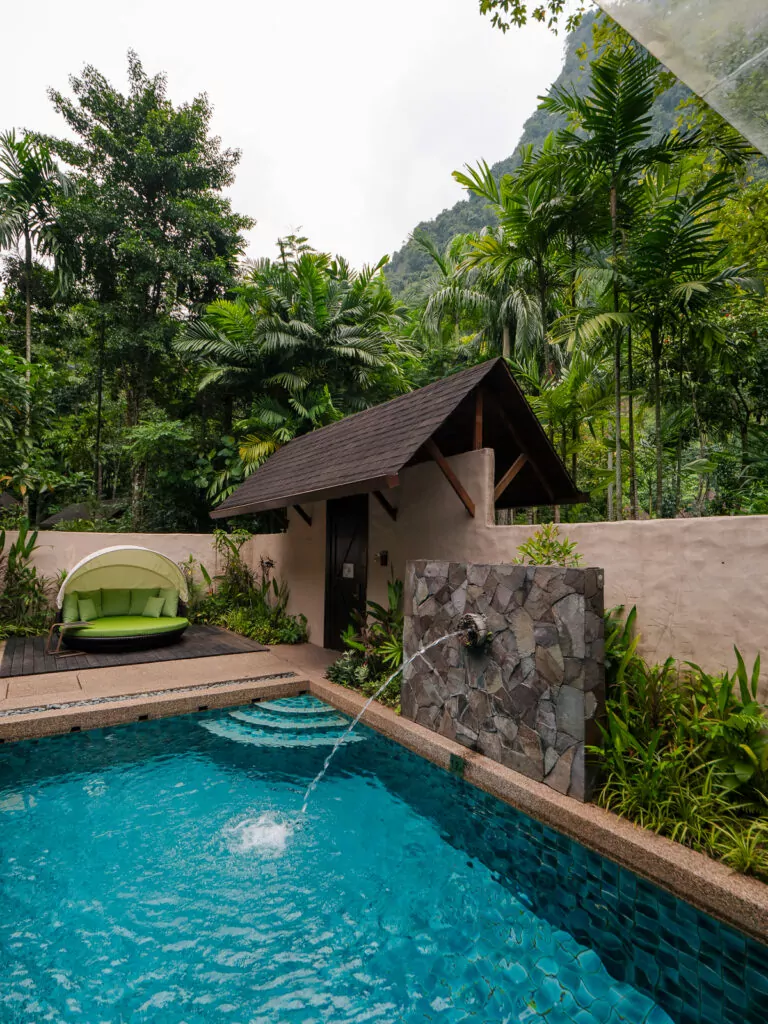

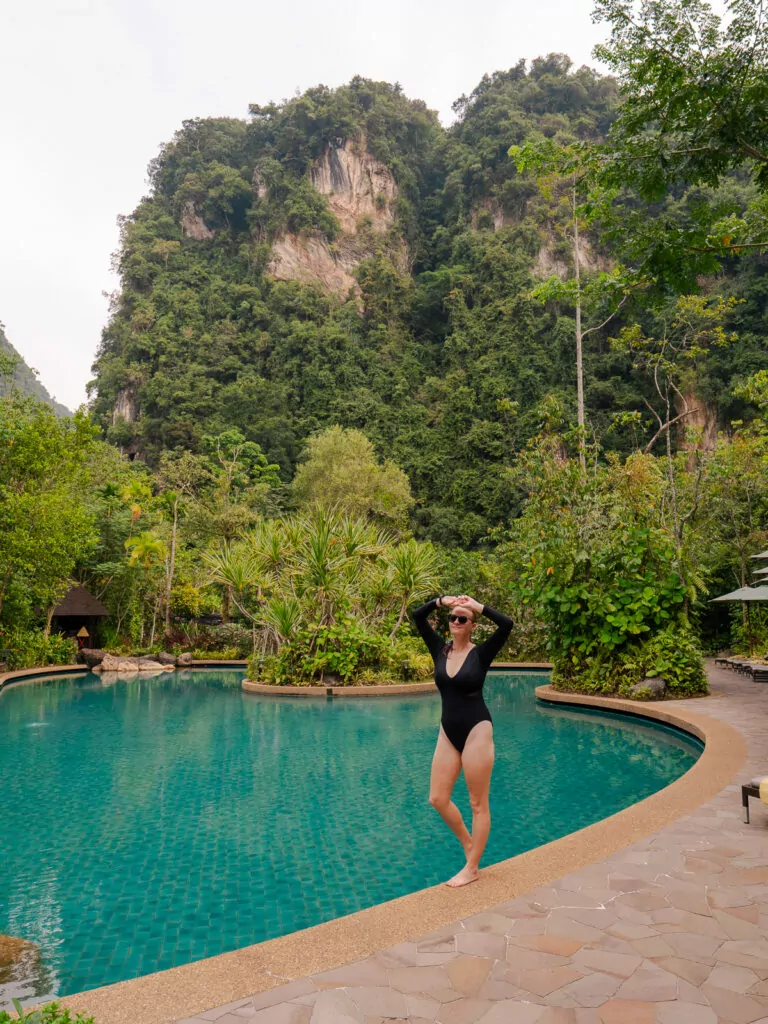
George Town, Penang
How to get there: 2 hour train from Ipoh to Butterworth, then catch the car ferry (20 minutes) or a Grab (20-25 minutes) to your accommodation in George Town
How long to stay: How much of your three weeks in Malaysia you dedicate to Penang will depend on your travel preferences, I’d recommend setting aside 3-4 days to allow for lots of foodie experiences, some slower pace old town exploring and the chance to get out of town, but you might want more time if your taste buds rule the roost, or less time if you’re not fussed on the food.
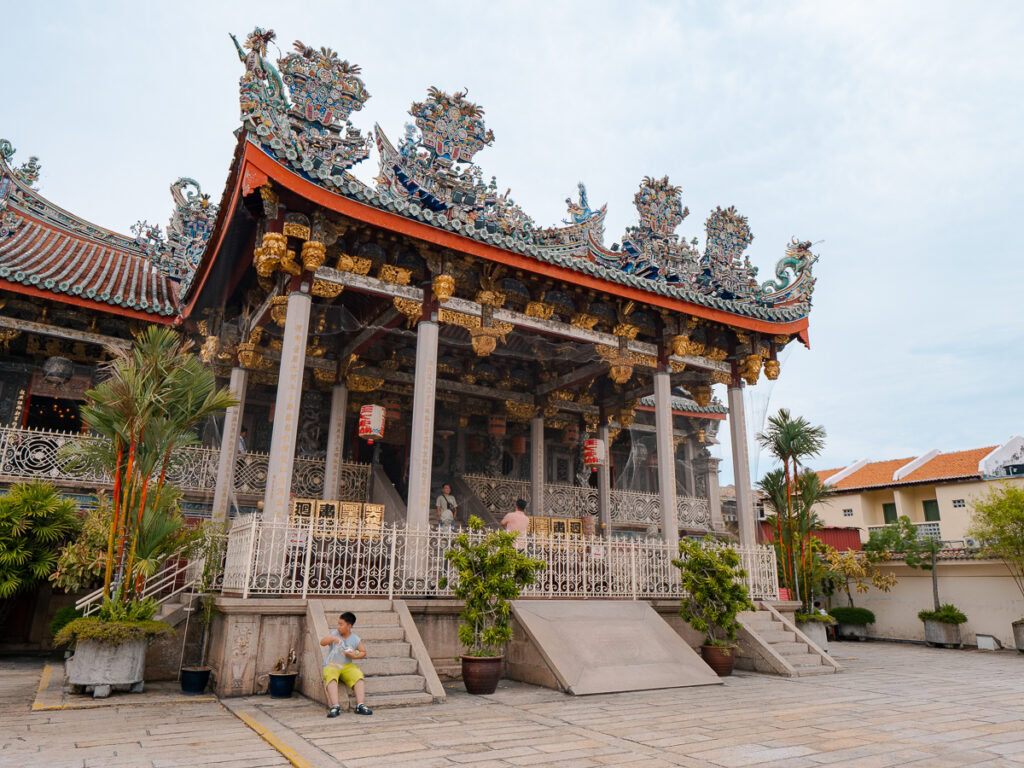
About George Town
George Town is the capital of the state of Penang, but some tourists tend to use both George Town and Penang to refer to the same destination. If someone says they’re “going to Penang”, they probably mean George Town.
This is one of the best foodie destinations in the world, with street food stalls and hole-in-the-wall restaurants serving up specialties like char kway teow, asam laksa, hokkien mee and nasi lemak. I hope your pants have a stretchy waistband!
Aside from the food there’s also a beautifully preserved old town, endless street art, vibrant temples and some active adventures within close reach.
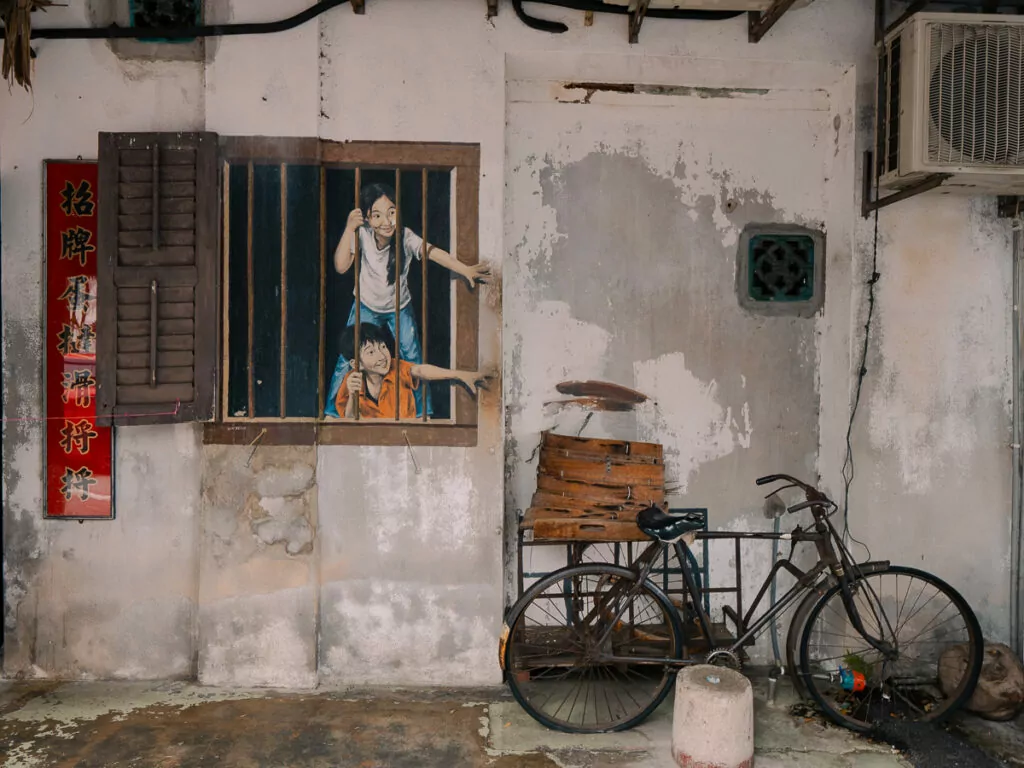
Things to do in George Town
- Eat, eat, eat! I would happily spend an entire week in George Town just to visit a new restaurant each meal of each day. Don’t miss Bibik’s for authentic Nyonya cuisine, Lagenda House for satay chicken, La Vie en Rose for pastries, Mollie for Laksa, and Cecil Street hawker market for cheap street food.
- Discover the city’s famous murals, lots of them were painted by legendary street artist Ernest Zacharevic
- Explore the UNESCO-listed Old Town, where you can see opulent colonial mansions and grand Chinese temples
- Take a guided tour through the old town to learn about the history from a local guide, with an included tri-shaw ride
- Visit Kek Lok Si Temple, one of the biggest Buddhist temple complexes in Southeast Asia, with an incredible panoramic outlook
- Head up to Habitat on Penang Hill for an epic sunset view, or book a ticket to TOP Penang for the view from the state’s tallest tower
- See the the floating neighbourhood of the Clan Jetties on George Town’s waterfront
- There are beaches at Batu Ferringhi if you’d like some time in the water, but this itinerary is about to take you to Malaysian Borneo which has a significantly nicer swimming spots
- Channel your inner child with a day trip to ESCAPE, one of Malaysia’s best theme parks, where you can ride the world’s longest zipline-coaster!
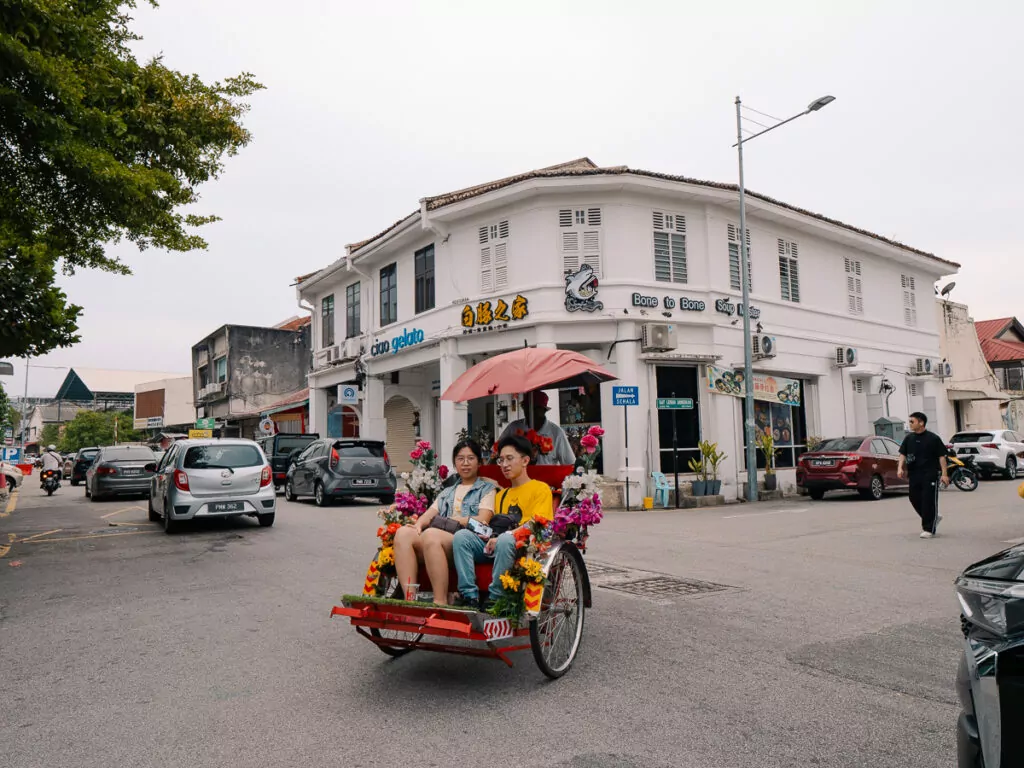
Where to stay in George Town
Budget:
- Sleep Box Penang is my go-to for a super comfortable budget stay, they have stylish and spacious private rooms with shared bathrooms, just a short walk from the centre of George Town
- New Great Shanghai and Homs Hostel are both top-rated female-only hostels
- 24 Kimberly (homely hostel with cheap dorm rooms)
Mid-range:
- SAVV Hotel (top-rated 3* hotel with a lush pool)
- Le Dream Boutique Hotel (affordable 4* hotel with great reviews)
- Areca Hotel (charming 4* hotel with a super aesthetic courtyard)
Luxury:
- I loved my stay at The Edison (photos below), a beautifully-restored colonial mansion with huge rooms, stylish interiors, an authentic interior courtyard, and a hidden pool out the back. If you stay here make sure you try the pineapple cinnamon jam at breakfast, honestly I think it’s the best jam I’ve ever had in my life.
- Eastern & Oriental Hotel is another bucket list stay for me, that pool 😍
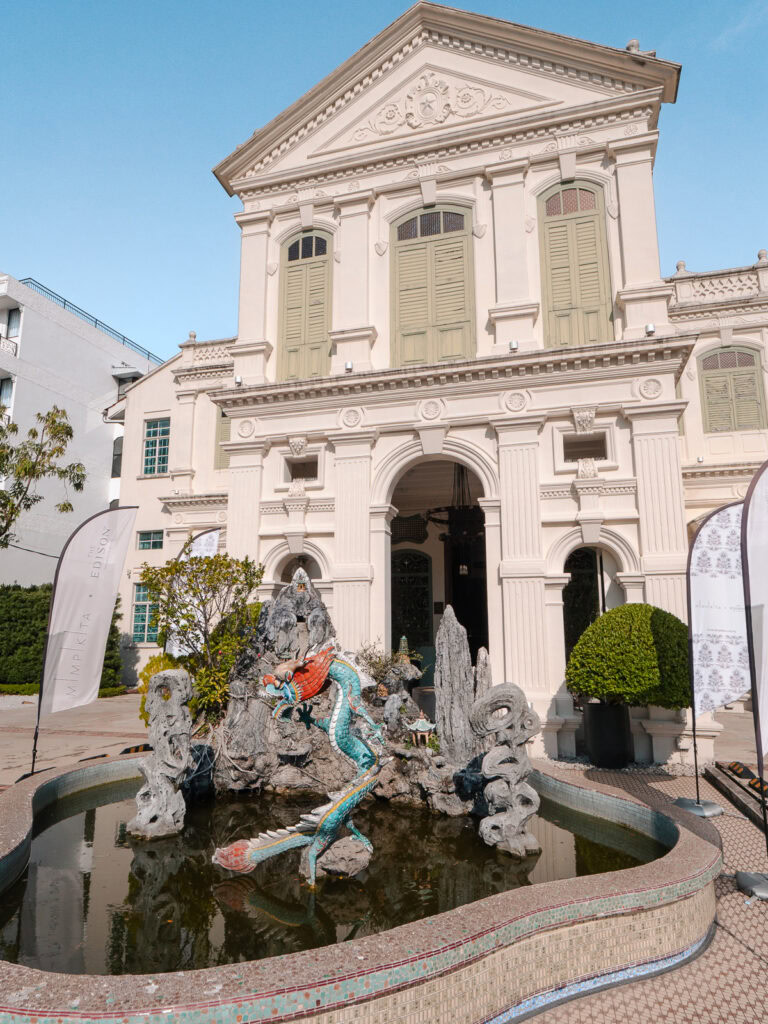
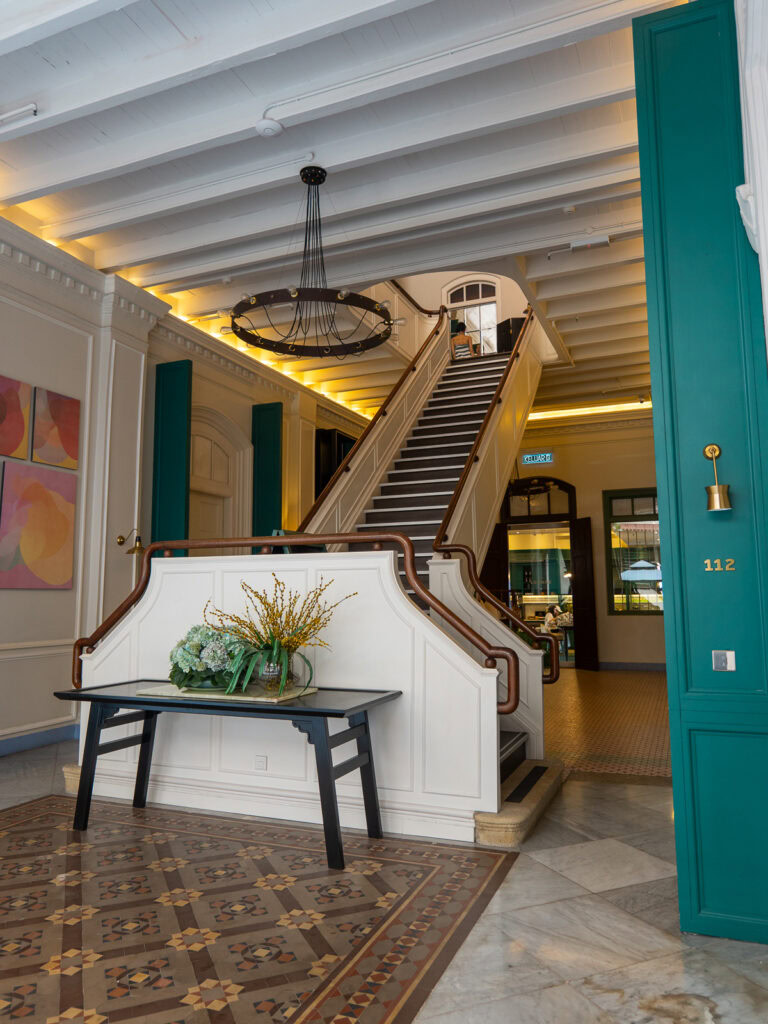

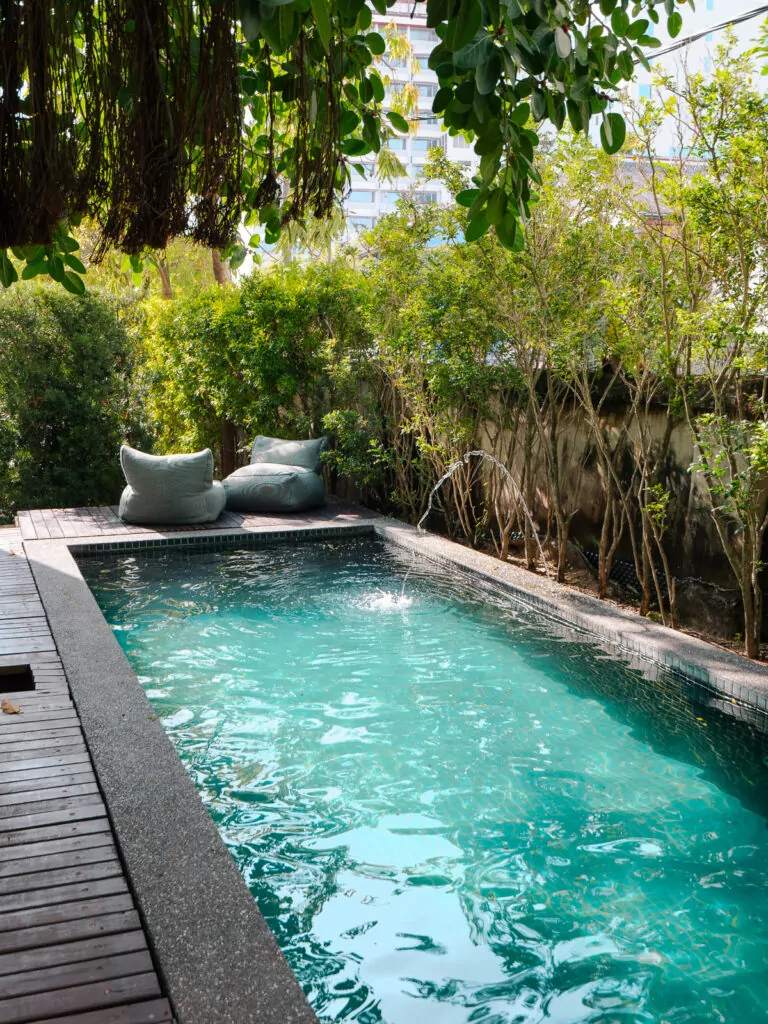
Kota Kinabalu
How to get there: Fly direct from Penang (2h 50m)
How long to stay: 1-2 days
About Kota Kinabalu
Kota Kinabalu (KK) is the jumping off point for the Malaysian Borneo part of this three week itinerary, but it’s worth spending a day or two in Sabah’s laidback capital city to see the sights, taste the food, and maybe embark on a day trip before you head inland.
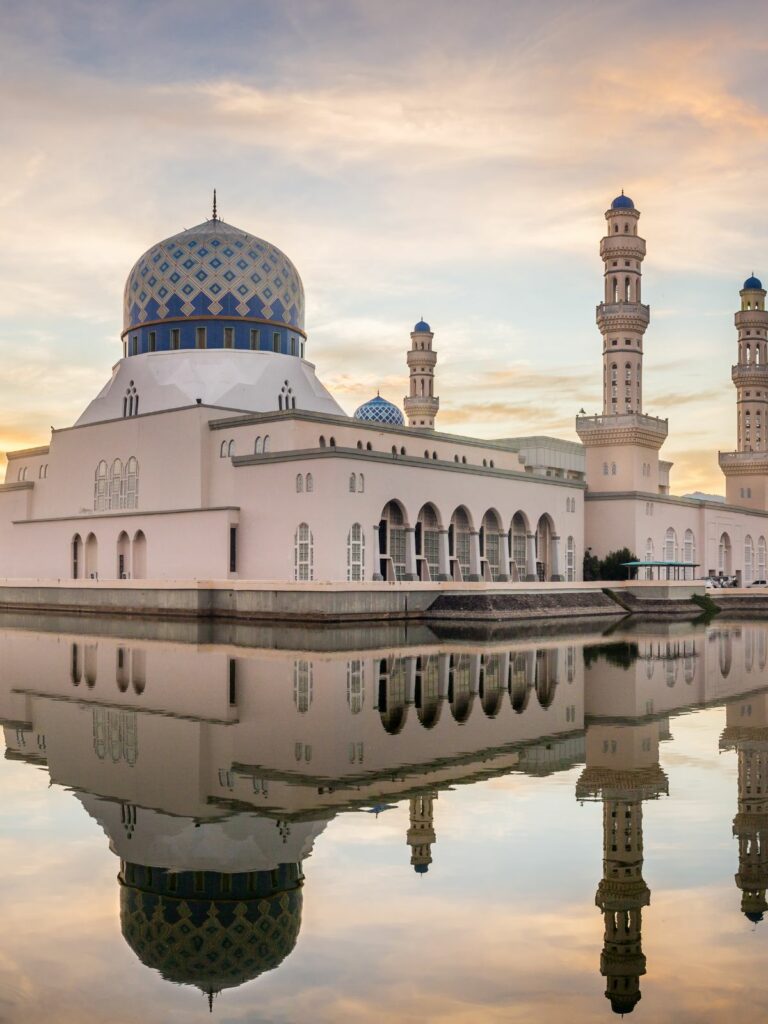
Things to do in Kota Kinabalu
- Savour sea-to-table seafood at KK Garden restaurant
- Or try a variety of local specialties at the bustling night markets
- Visit the magical floating mosque, which is perfectly reflected in the surrounding lagoon on a clear day
- Enjoy sunset cocktails at the waterfront
- Learn about indigenous culture at the Sabah State Museum or head to Mari Mari Cultural Village to experience it yourself
- Take a day trip to Kinabalu Park for some hiking, Tunku Abdul Rahman Marine Park for snorkelling or diving, or the Kawa Kawa River for a firefly cruise
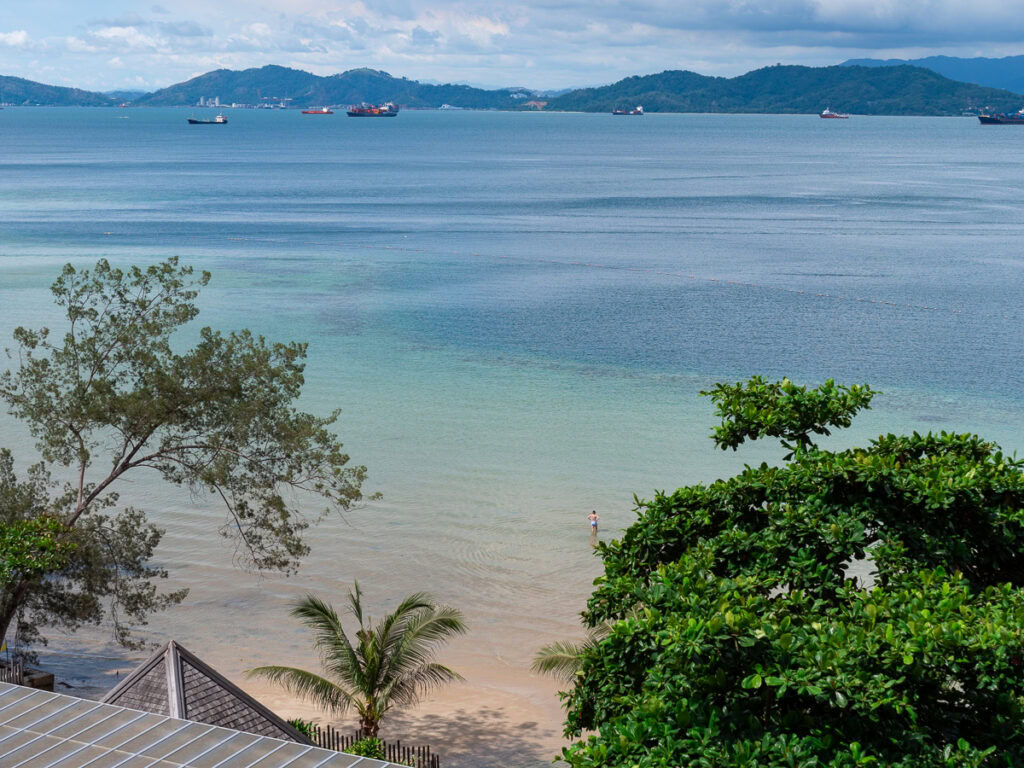
Where to stay in Kota Kinabalu
Budget:
- TOOJOU Hostel is my go-to, they’ve got dorms and private rooms, a dedicated co-working space, a rooftop bar, and a hostel cat named Pablo who uses the twisty slide to get from the 1st floor to reception. Yes, I’m serious.
- H2 Worldpackers (cheap and cheerful social hostel)
- ACJ Residence (cosy budget private rooms)
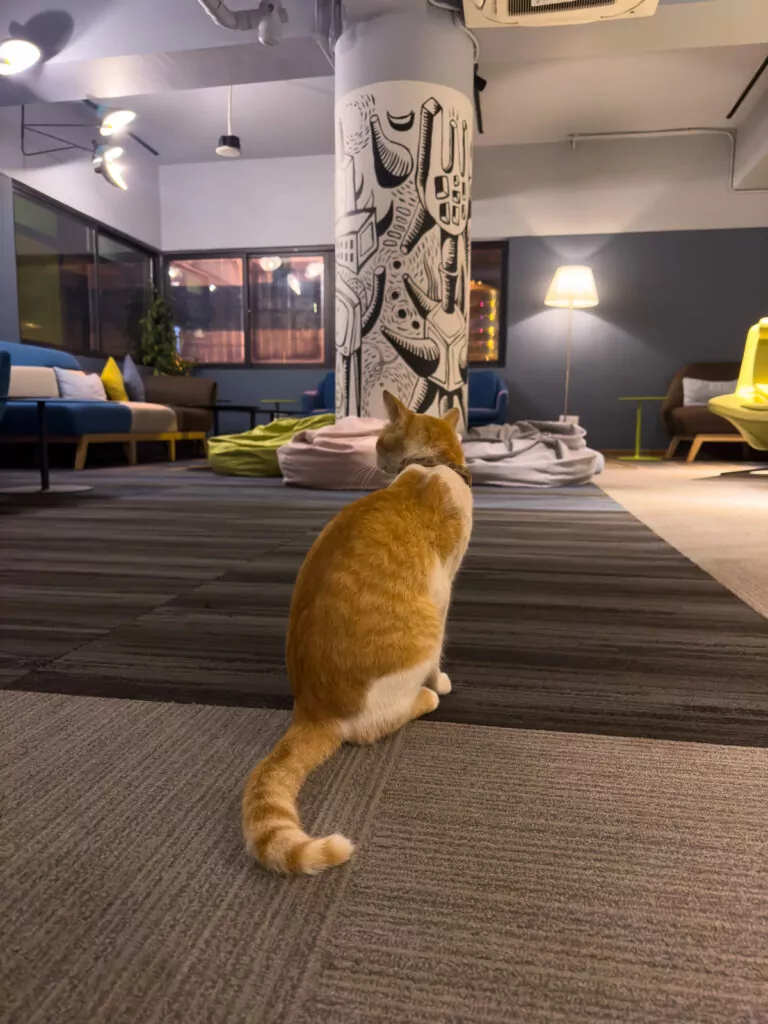

Mid-range:
- The Aru Hotel (studios and apartments away from the city chaos)
- The LUMA Hotel (stunning boutique design hotel, very affordable for what it is)
- Hotel 7 Suria (simple, cheap, fantastic location next to the port)
Luxury:
- Gaya Island Resort (photos below) is the perfect place if you want a luxe stay, only 15 minutes from KK by boat and you’ll arrive at this paradise island eco-resort. Award-winning spa, delicious dining experiences, an in-house conservation team running epic wildlife experiences, a highlight of my time in Borneo.
- Hyatt Centric (super stylish and new 5* hotel with a rooftop swimming pool)
- Ritz Residence (fancy, opulent hotel rooms in the Imago shopping complex)
- Shangri-La Tanjung Aru (top-rated 5* beachfront resort)
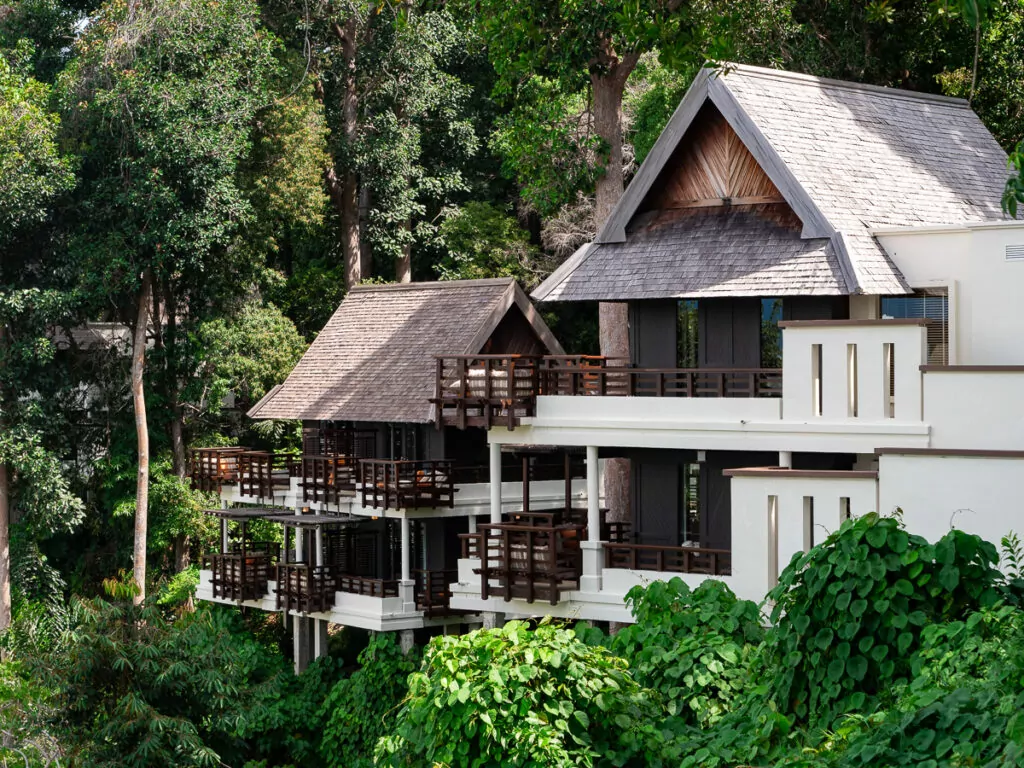
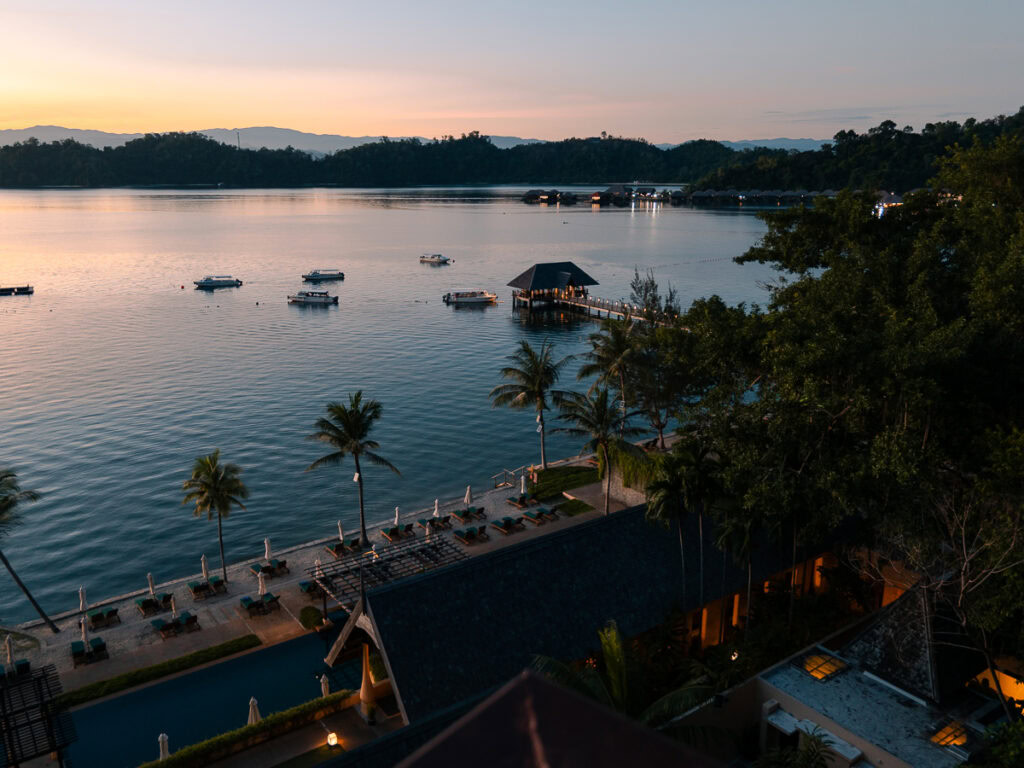
Recommended Borneo tour: East Sabah Adventure
Before I dive into the Borneo destinations on this three week Malaysia itinerary, let me quickly tell you about the tour I did: the East Sabah Adventure with G Adventures.
Borneo isn’t as well-connected as Peninsular Malaysia, and getting from A to B can be time-consuming and expensive if you’re travelling Malaysia solo, so I decided to jump on an eight day tour to minimise the logistical side of things.
It also had added benefits of meeting likeminded travellers, having a legendary local guide who was an expert on the region’s wildlife, and offering fantastic value for money vs. me replicating the itinerary by myself.
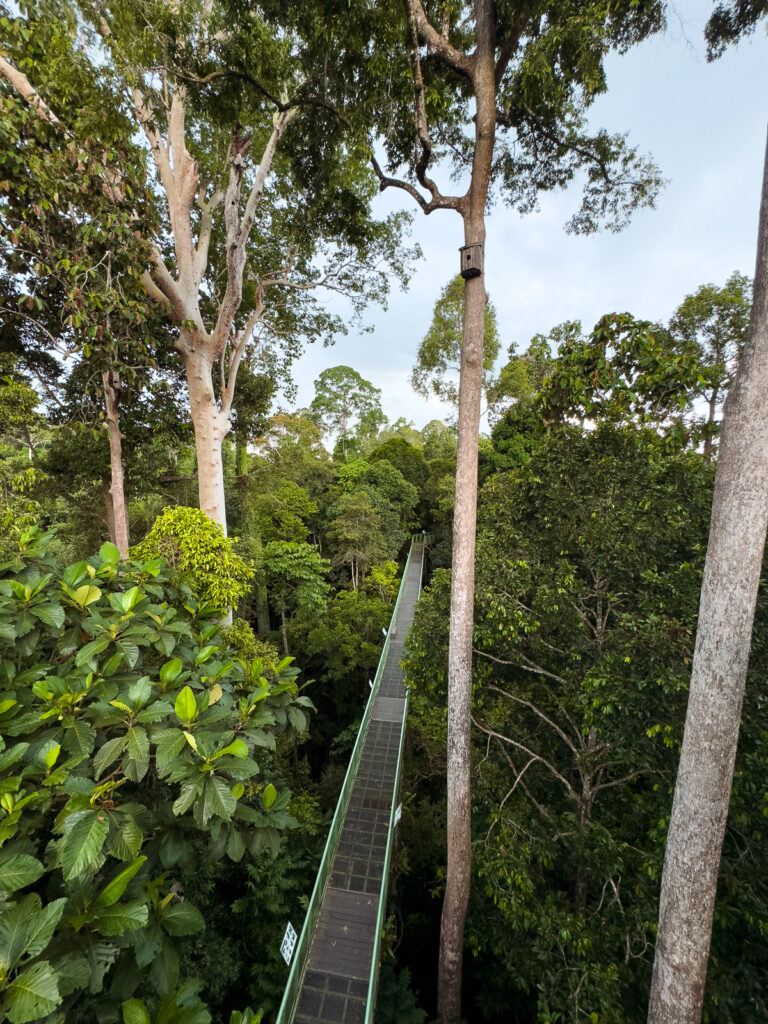
The tour was eight days in total, starting and ending in Kota Kinabalu, covering Kinabatangan River and Sepilok which I talk about below, as well as having an island stay at Walai Penyu off the coast of Sandakan. Lots of wildlife experiences are included!
If you want to slot this tour in to your Malaysia trip, you could fly from Penang to KK on the tour’s first day, just arrive by 6pm for the welcome meeting.
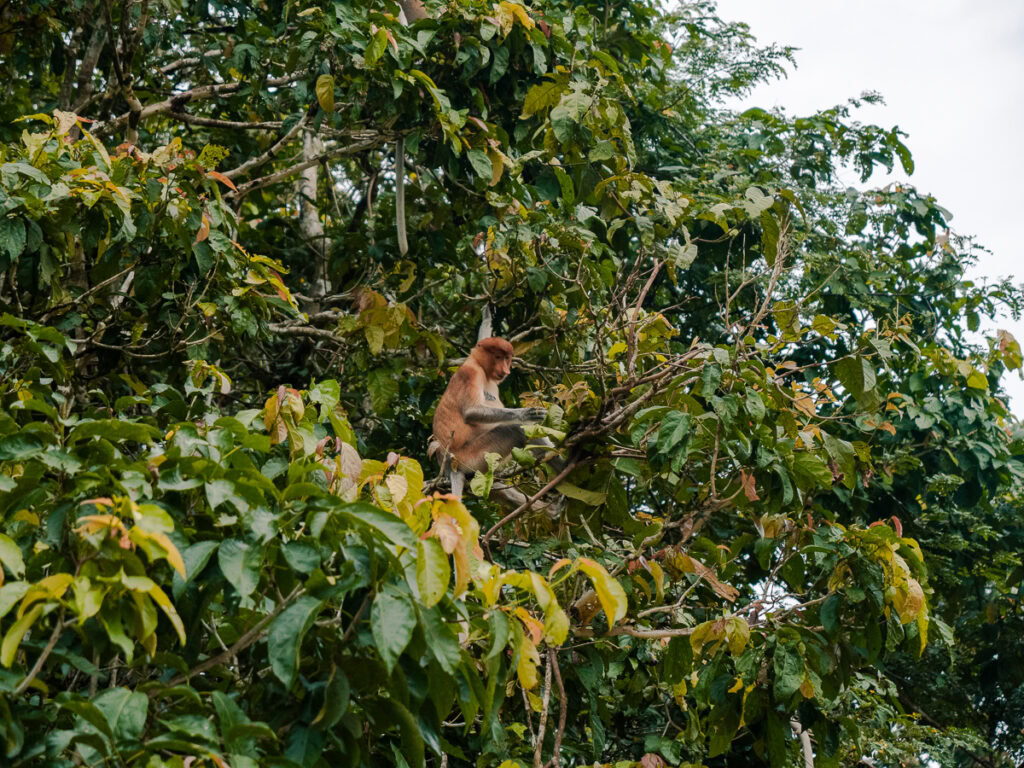
At the end of the tour, if you want to follow the rest of this itinerary and head over to Semporna for some ocean time, I’d actually recommend leaving the tour a day early to save time. Instead of catching the flight from Sandakan to KK on Day 7 of the tour, book your own flight from Sandakan to Semporna instead, and say goodbye to your tourmates at the airport. When the tour arrives in KK it’s just free time with no organised activities, so you’ll just miss out on the typical goodbye dinner (extra cost) and nothing more. Saves a day, and saves an unnecessary flight!
Want more info? Read my full East Sabah Adventure tour review or my two week Borneo itinerary.
Kinabatangan River
How to get there: 5-6 hour drive from Kota Kinabalu, or fly to Sandakan (40m) and then it’s 2-3 hours to Kinabatangan
How long to stay: 3 days
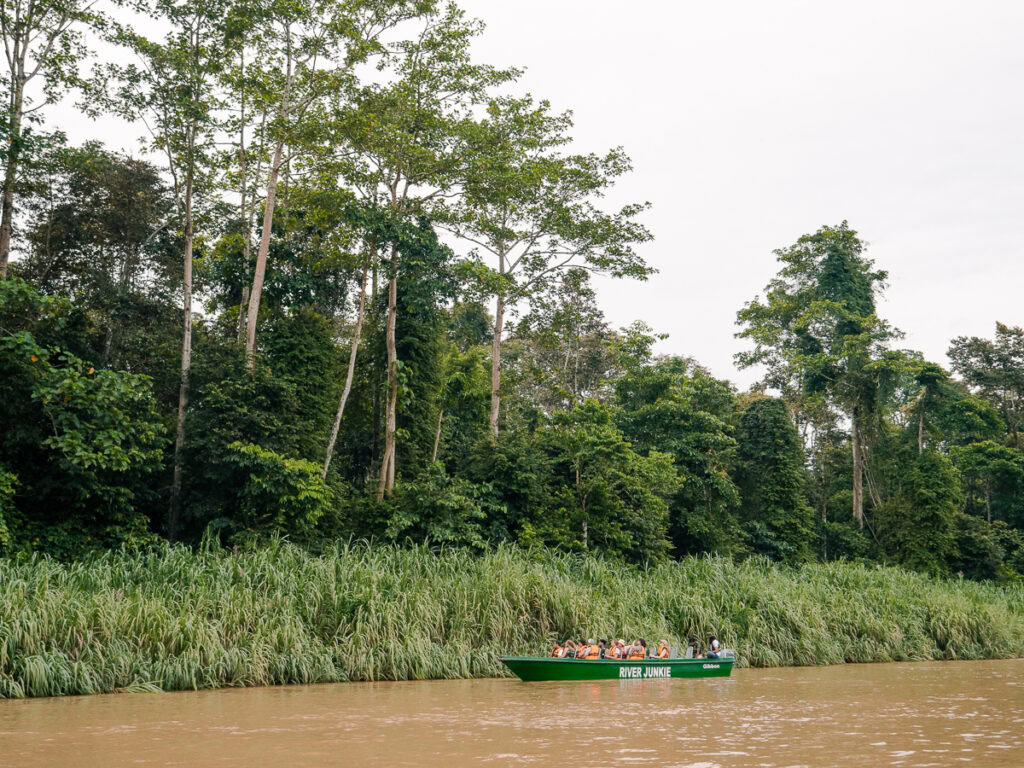
About Kinabatangan River
One of the best and most accessible spots in Borneo for wildlife spotting, the Kinabatangan River is a haven for animal lovers and keen photographers. There’s no better way to search for orangutans, pygmy elephants and proboscis monkeys than on a river safari, giving you an unbeatable vantage point for seeing these rare animals in their natural habitat.
Staying for a couple of nights at a jungle lodge means you’ve got time for multiple safaris as well as night walks, giving you even more chances of seeing what you’re here for.
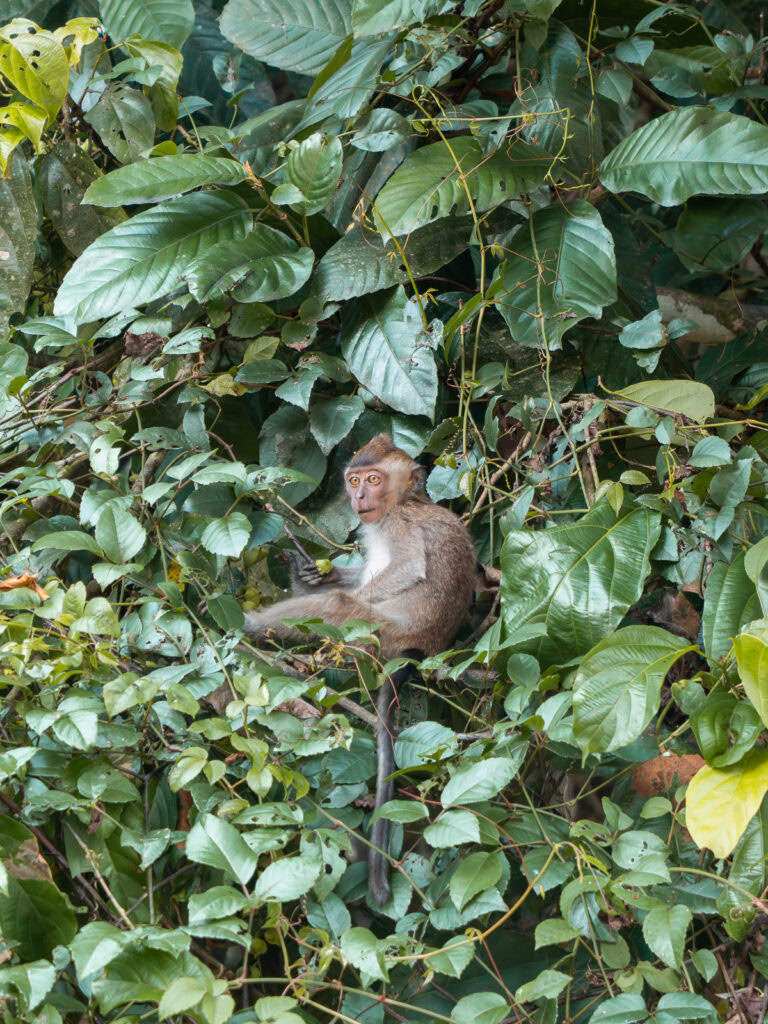
Things to do in Kinabatangan River
- A river safari, obviously. Most lodges run them in the early morning and late afternoon, when the animals are at their most active.
- A night walk through the jungle to see creatures that prefer the darkness, like tarsiers, frogs, owls and civets
- Birdwatch from the riverfront deck of your lodge
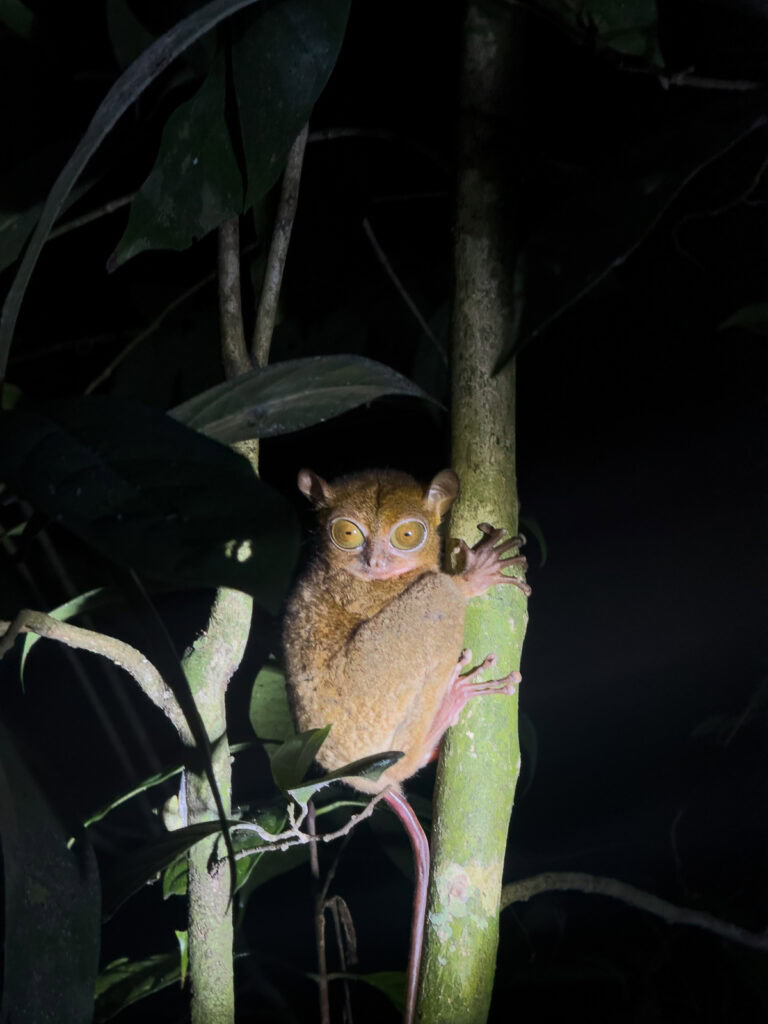
Where to stay in Kinabatangan River
The majority of the lodges along Kinabatangan River are located in the Bilit and Sukau areas, and most of them offer all-inclusive packages with meals and guided activities included. Some well-rated options are:
- Sukau Rainforest Lodge (premium luxury rainforest lodge)
- Borneo Natural Sukau Bilit Resort (where I stayed on my tour, simple but well-equipped jungle huts, and Rian, our lodge wildlife guide, was brilliant)
- Bilit Adventure Lodge (more comfortable with upgraded amenities)
- Borneo Jungle Adventure (basic but great reviews)
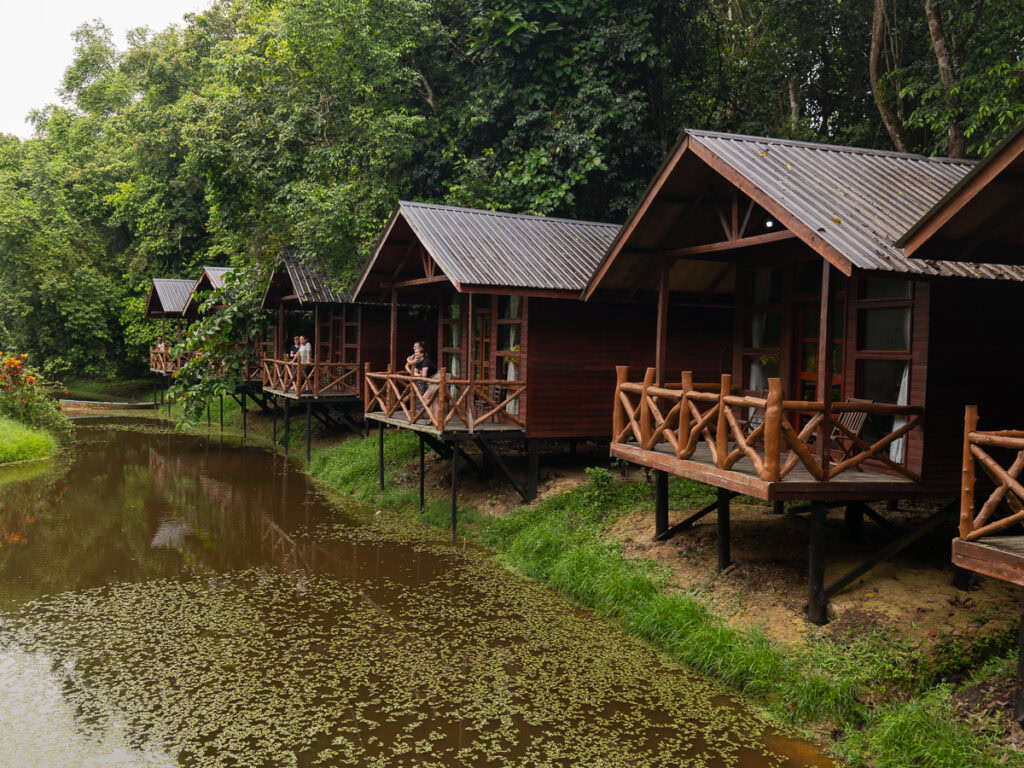
Sepilok
How to get there: From the Kinabatangan River lodges it’s 1h 45m by car, or 20-25 minutes if you’re coming from Sandakan
How long to stay: 1-2 days
About Sepilok
Sepilok is renowned for its wildlife conservation efforts, with the main attractions being the Orangutan Rehabilitation Centre and the Bornean Sun Bear Conservation Centre. A day or two is enough time to visit the centres, see the animals, learn about the conservation projects and what we can do to help, and spend a bit of time in the rainforest too.
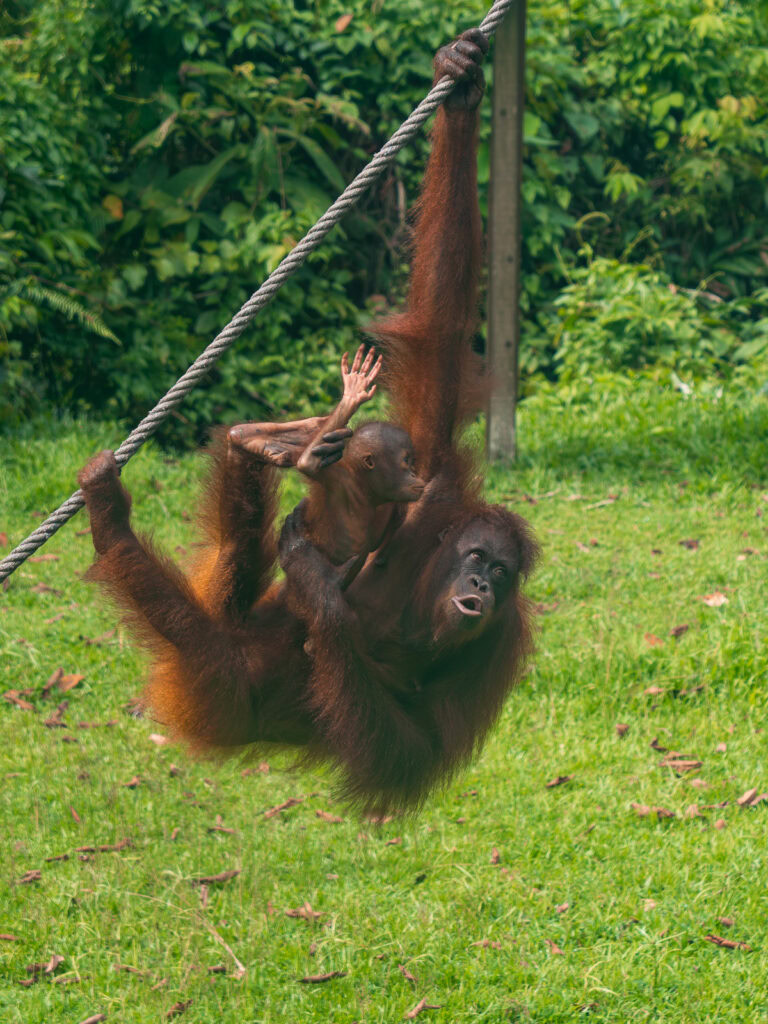
Things to do in Sepilok
- Visit the Orangutan Rehabilitation Centre to see young orangutans play at the nursery, and cross your fingers to see a semi-wild orangutan up close (these are orangutans that live freely in the conservation area behind the centre, but that have access to the centre’s twice-daily feedings if they feel like it)
- Head next door to the Bornean Sun Bear Conservation Centre, which is dedicated to protecting the world’s smallest bear species. See rescued sun bears, learn about the impact of poaching, deforestation and the illegal wildlife trade, and buy a cute souvenir, knowing that your money is going somewhere important.
- Explore the rainforest from above at the Rainforest Discovery Centre, where you can wander the canopy walkway and spot leaping monkeys and soaring hornbills
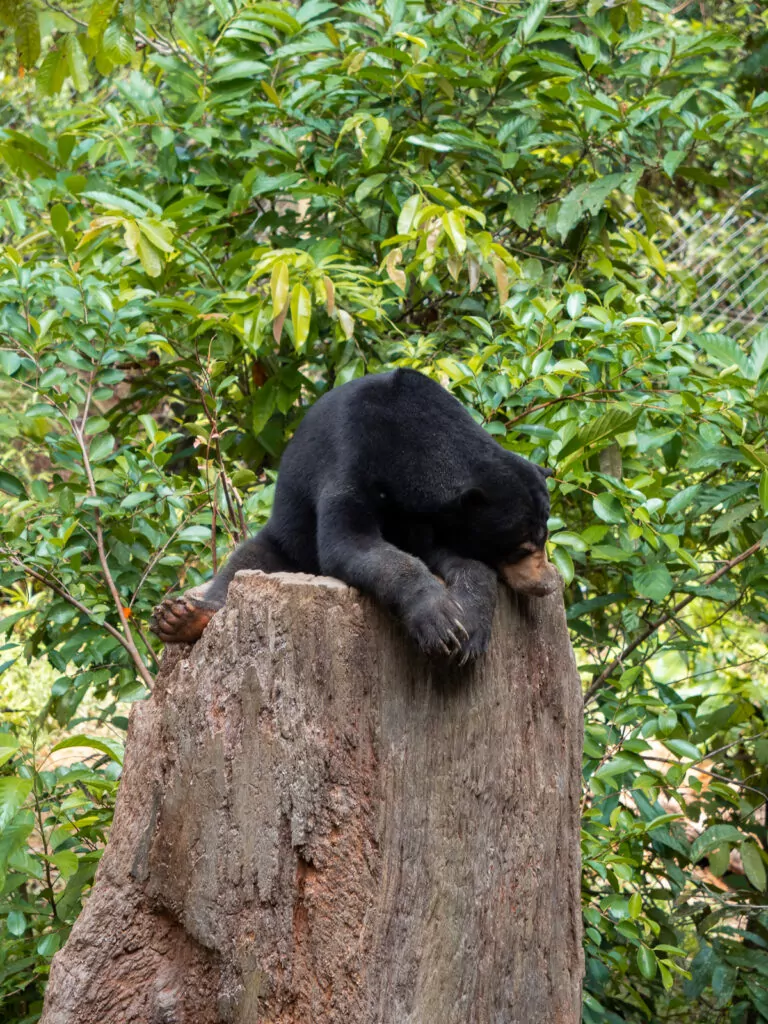
Where to stay in Sepilok
Sepilok has eco-lodges that are very similar to the ones I just mentioned in Kinabatangan River.
- Paganakan Dii Tropical Retreat (super cheap, great reviews)
- Sepilok B&B (also budget-friendly)
- Borneo Sepilok Rainforest Resort (where I stayed on my tour, a bit more expensive with nice rooms and a swimming pool)
- Sepilok Forest Edge Resort (glamping tents)
- Sepilok Nature Lodge (a premium option, lots of reviews mention wild orangutans in the lodge grounds)
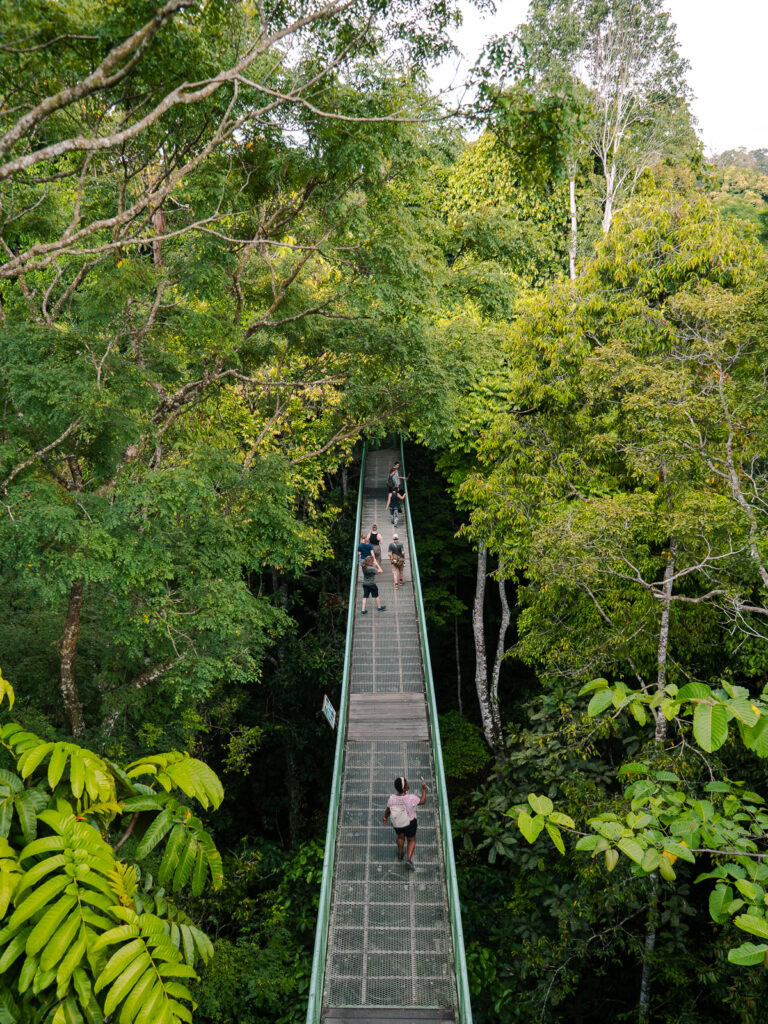
Semporna & Sipadan
How to get there: From Sepilok take a 20-25 minute Grab to Sandakan, then fly to Tawau Airport (TWU) and catch a 1.5-2h transfer to Semporna on the coast. A bit of a rigmarole, but totally worth it!
How long to stay: 1-2 days in Semporna, 4-5 days on one of the islands if you want to scuba dive
About Semporna
Semporna is the gateway to Malaysian Borneo’s best scuba diving spots, offering underwater explorers access to one of the most diverse marine ecosystems and some of the healthiest coral reef in the world.
Spend a day in laidback Semporna to embark on a day trip to hike Bohey Dulang for magical views, then it’s time to explore another layer of Malaysia. And by another layer, I mean under the sea!
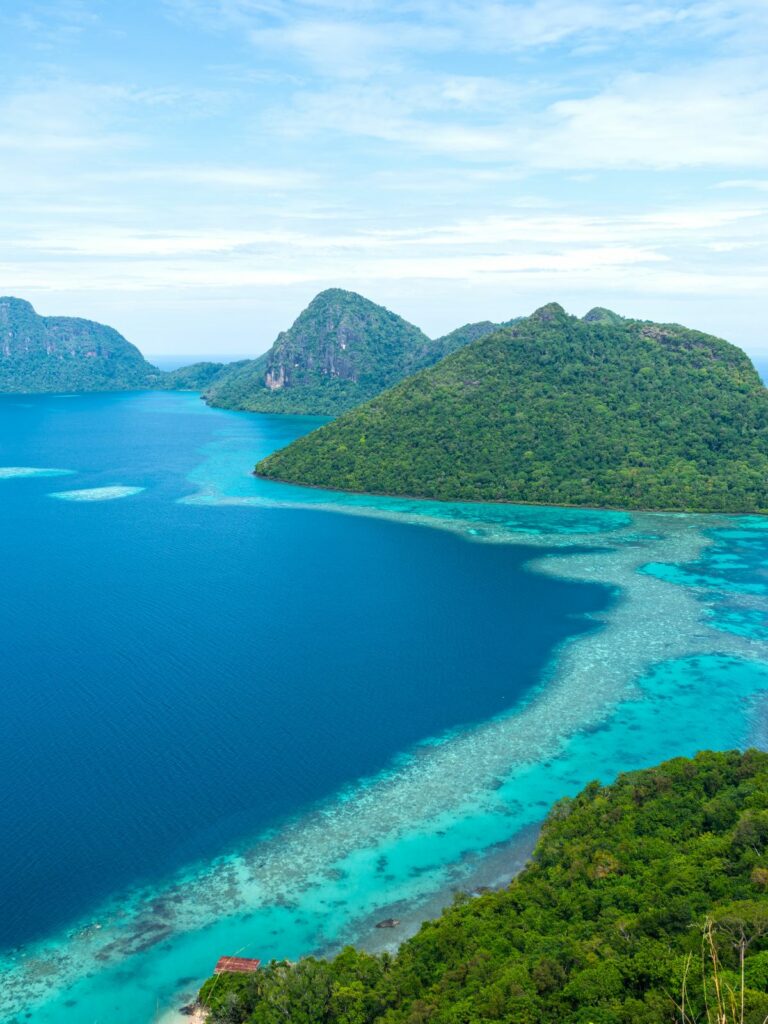
Where to stay in Semporna
Budget:
- Bubble House (I spent a night here before my dive trip, quiet, comfortable homestay)
- Island Backpackers (budget-friendly social hostel)
- MY SPACE (futuristic capsule hostel)
Mid-range:
- Amazing Rooms (simple, central hotel)
- Timba Timba Garden Resort (peaceful, rustic retreat slightly out of town)
Luxury:
- Larapan Water Village (brand new small overwater resort)
- Sea Star Resort (4* overwater resort)

About Sipadan
If you’re already certified, chances are you’ve heard fellow divers talk about Sipadan, and now it’s your chance to tick this slice of ocean paradise off your travel bucket list. There are some rules you need to be aware of though:
- Sipadan permits are limited to 254 divers per day, and they get booked up early. To secure a permit you need to book a Sipadan package with a dive operator, they generally have a minimum number of nights you have to stay to ensure your permit, ranging from 2 to 5.
- You’ll need your Advanced Open Water certification to dive Sipadan, if you don’t have it yet then just book the course with your dive operator and you’ll be able to do it on Day 1 and Day 2 of your trip, then you can do your Sipadan day afterwards
- You get two Sipadan dives on a Sipadan day, then your final dive of the day will be at Mabul or Kapalai on your way back
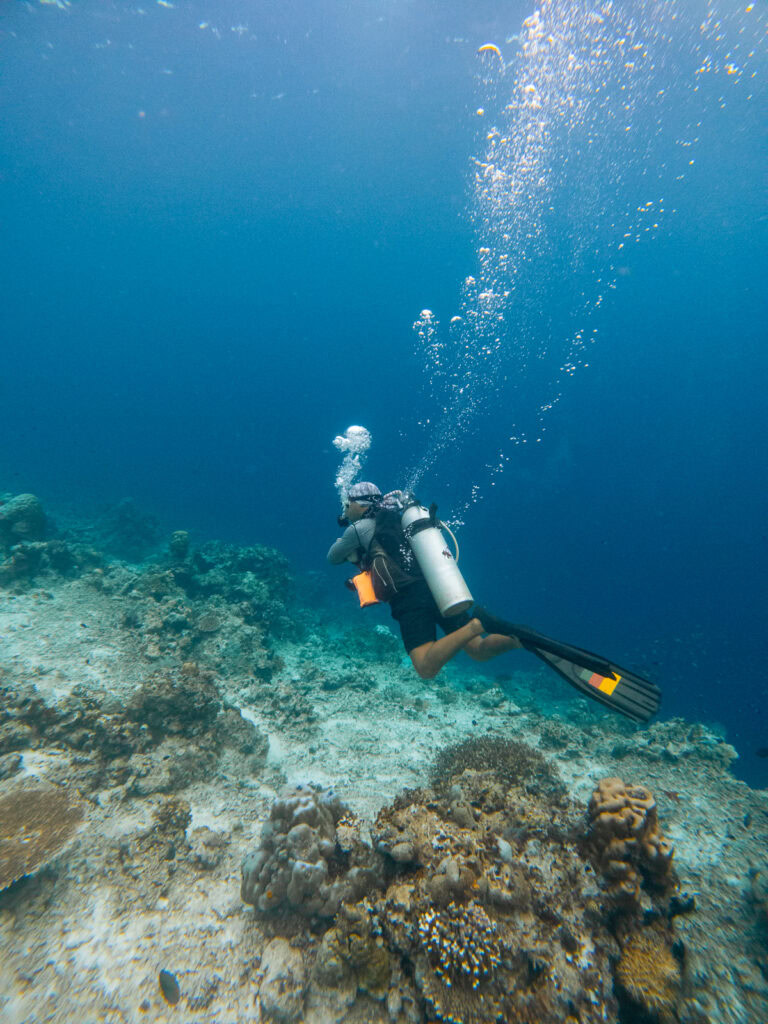
If you’ve never dived before but are willing to give it a go, you can do Discovery dives or your Open Water certification with any of the dive operators in the area, and you’ll get to dive at places like Mabul Island and Kapalai Island to see giant turtles, vibrant coral, tonnes of macro life, cuttlefish, octopus and more.
And if you’re just keen to snorkel then that’s fine too, stay at one of the island resorts (there are overwater bungalows for a fairly affordable price) and you’ll still be able to see loads of marine life from the surface.
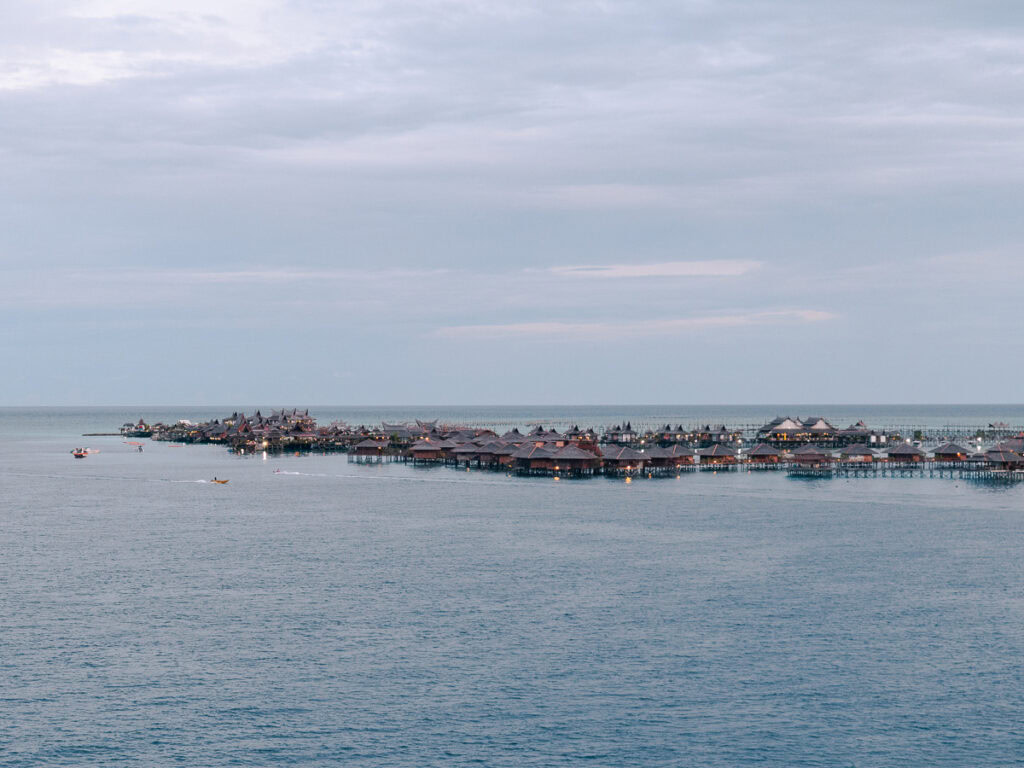
Where to stay for diving at Sipadan
My absolute top pick for any Sipadan dive trip, and one of the coolest travel experiences I’ve ever had, is Seaventures Dive Rig.
This is the only dive rig in the world, an ex-oil rig that’s been ugly duckling-ed and transformed into an eco-friendly scuba diving paradise, with comfy cabins, super tasty buffet meals, a PADI 5 star dive centre, and an external elevator that literally takes you into the ocean for you to descend to the thriving house reef.
Pinch me!
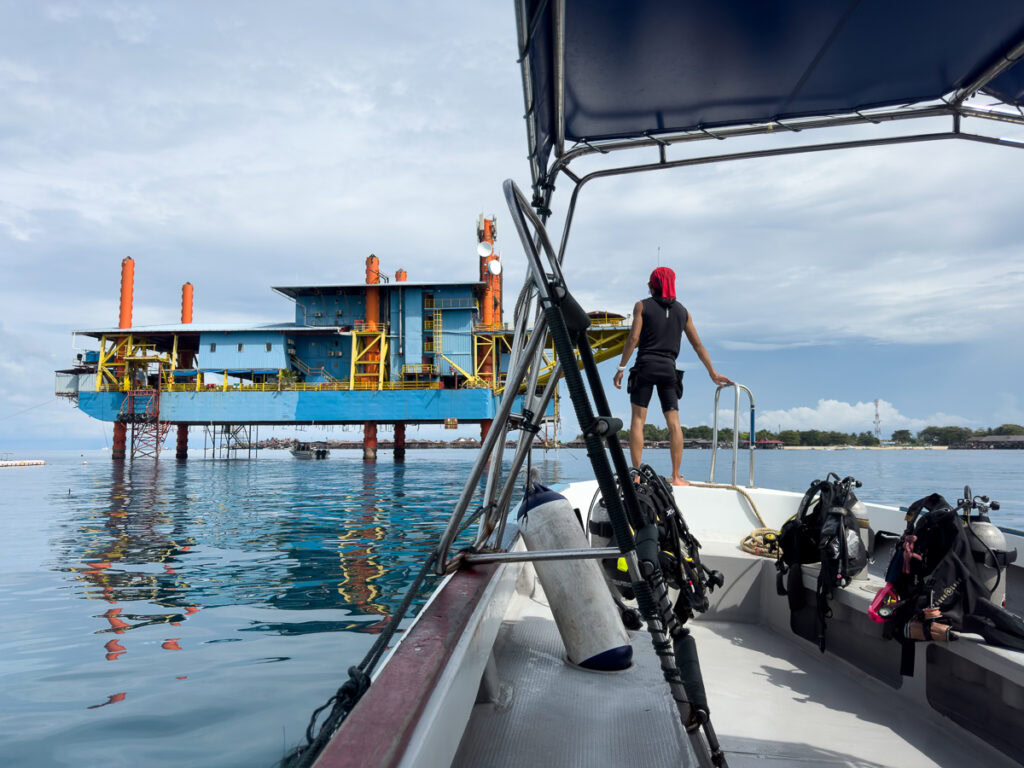
Your stay here includes three boat dives per day, unlimited house reef dives (!!!), and you get one guaranteed Sipadan for a three night stay, or two guaranteed Sipadan days for a five night stay.
You can do your Open Water course on the rig, your Advanced Open Water course (I did mine here), and it’s the only place in the world you can do the PADI Rig Diver Specialty Course. When you’re not breathing through a regulator, you can relax on the sundeck, challenge your dive buddies in the games room, get a massage, or do the 8m high or 20m high rig jump if you dare.
Read my full Seaventures DIve Rig review >>
Watch my Seaventures Dive Rig video >>
Book your Seaventures Dive Rig package >>
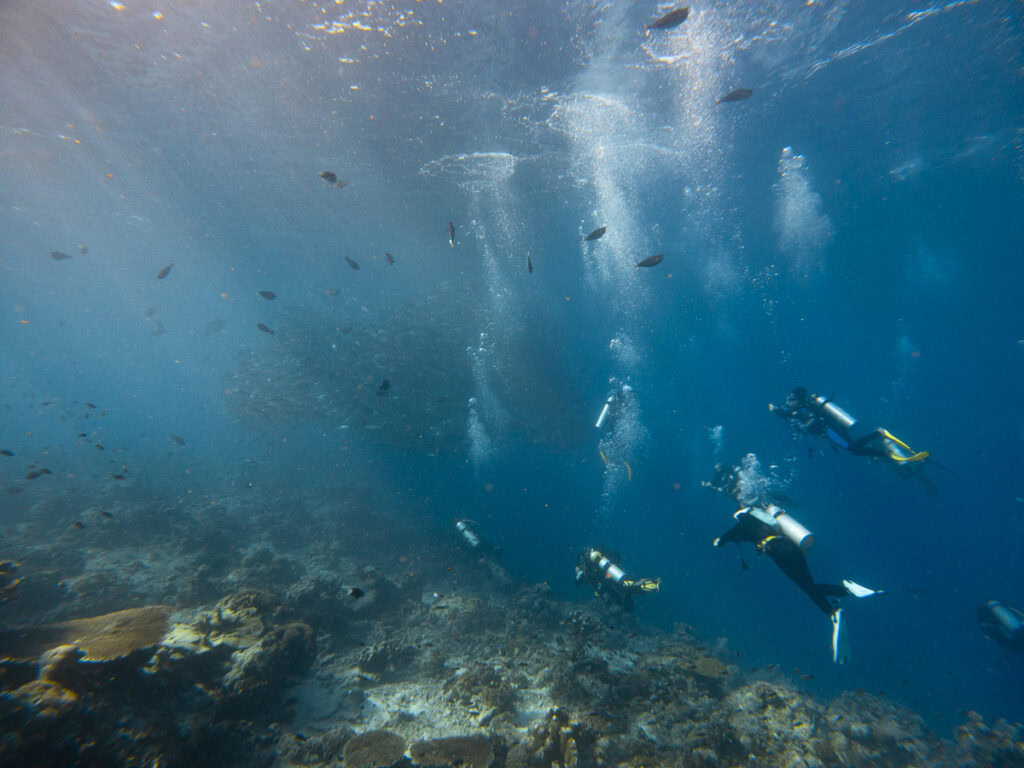
If the rig is fully booked or you’re wanting an overwater bungalow experience, there are luxury dive resorts like Sipadan Water Village that offer Sipadan diving packages too.
Other options for your 3 week Malaysia and Borneo itinerary
If you’ve got a bit more time, or you want to swap out any of the places I’ve recommended in the three week Malaysia itinerary above, here are some other popular destinations to visit.
Cameron Highlands
The Cameron Highlands are located between Ipoh and Penang, a popular stop for tour groups to visit its luscious tea plantations, rolling landscapes and strawberry farms. It’s also one of the few parts of Malaysia that offers a reprieve from the oppressive heat and humidity, thanks to the cooler climate at elevation. I’ve left it off the itinerary because I personally didn’t rate it during my first Malaysia visit a few years ago.
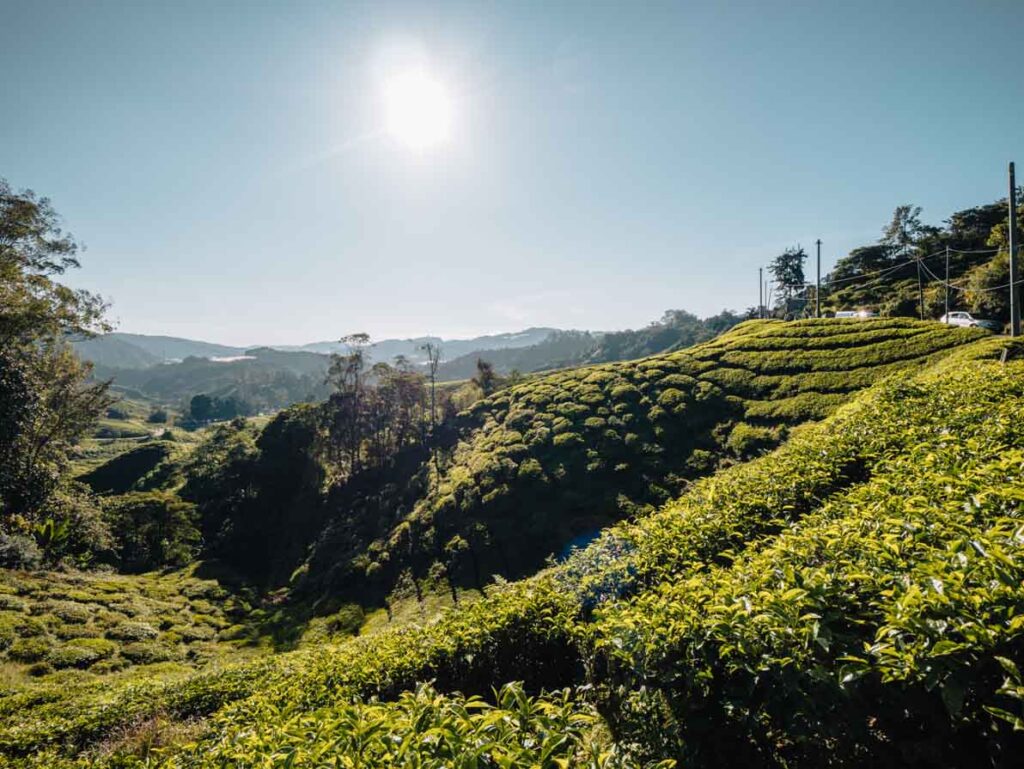
I’m not sure there’s a nice way to say this so I’ll just say it straight: it’s SUPER tacky. Like people in Transformers costumes roaming the street to get paid for photos, endless trashy plastic souvenirs, and sub-par accommodation and food that’s more expensive than anywhere else in Malaysia, completely inauthentic.
Oh, and it’s haunted 🙃 I’m actually not superstitious at all, but the hotel we stayed at in Cameron Highlands was undeniably home to some kind of paranormal activity. Doors that moved themselves, self-opening microwaves and an all-round creepy aura were enough for one of our friends to give up her solo room and come bunk with us for the night!
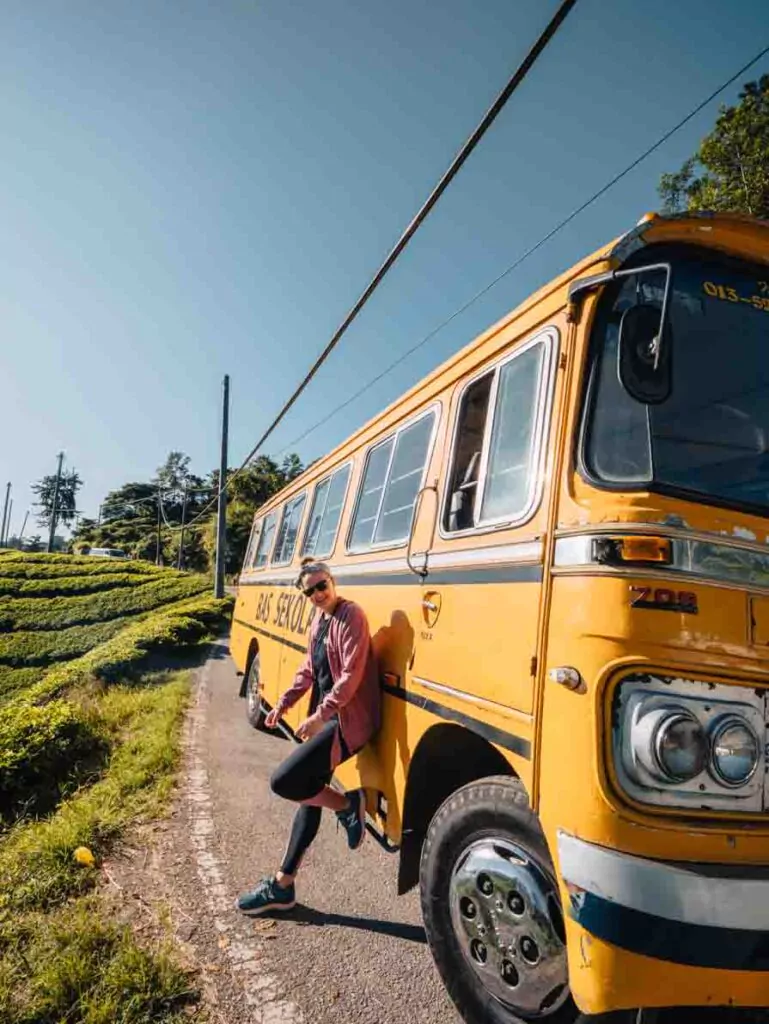
Langkawi
The most popular beach destination in Malaysia, you’d probably expect Langkawi to be included in any Malaysia itinerary, but for this trip I’ve opted to focus on the more remote and untouched coastal wonders of Borneo instead.
Langkawi’s tourism industry is decades ahead of Sabah, which means more commercialisation, higher prices and far more people to share the sand with. It’s fine for a holiday, but it’s certainly not an authentic cultural experience.
There are some world-class resorts there though, so if you’ve got ringgit to spare and want a dreamy place to stay, Langkawi could be an add on for your three weeks in Malaysia.
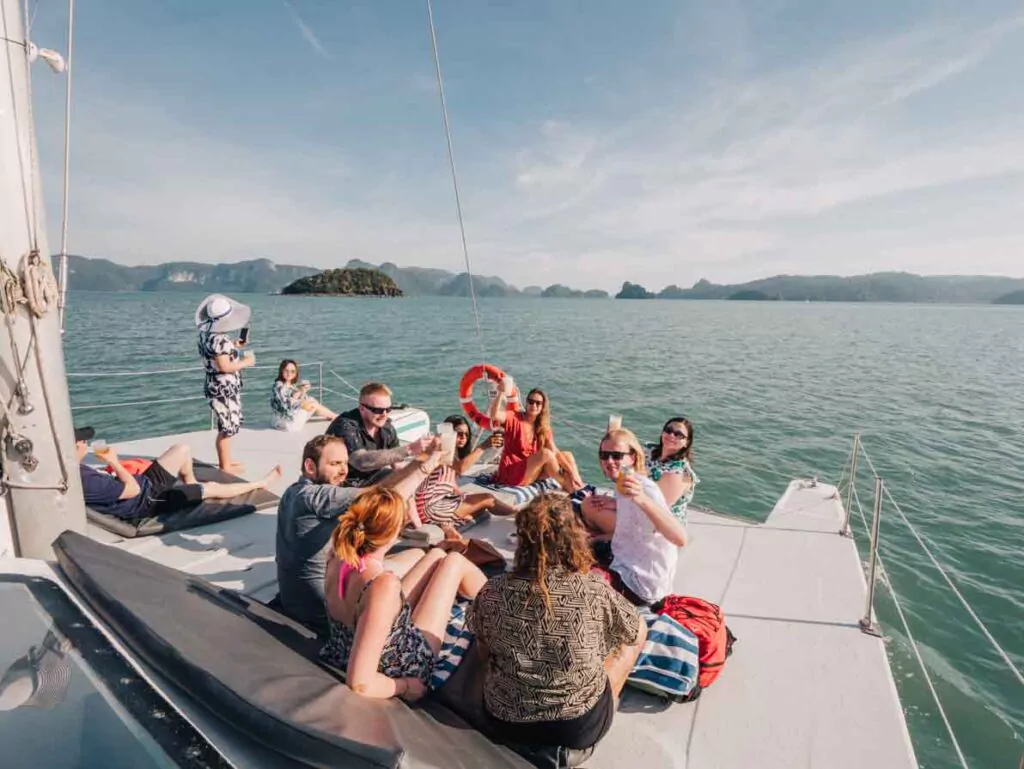
Perhentian Islands
Another beach option in Peninsular Malaysia, the east coast Perhentian Islands are significantly harder to reach, less developed and more unspoilt than Langkawi over on the west coast. I’ve only left them off this itinerary because I haven’t been there myself, but right now they’re at the very top of my Southeast Asia bucket list!
The diving here might not be as highly-regarded as Sipadan, but it’s still world-renowned, and many divers make the arduous flight-taxi-boat journey to discover what’s living beneath the surface of these remote islands.
If you don’t want to make the trip to Borneo then you could combine the Perhentian Islands with the Taman Negara Rainforest (info below) to tick the wildlife and underwater boxes in Peninsular Malaysia.
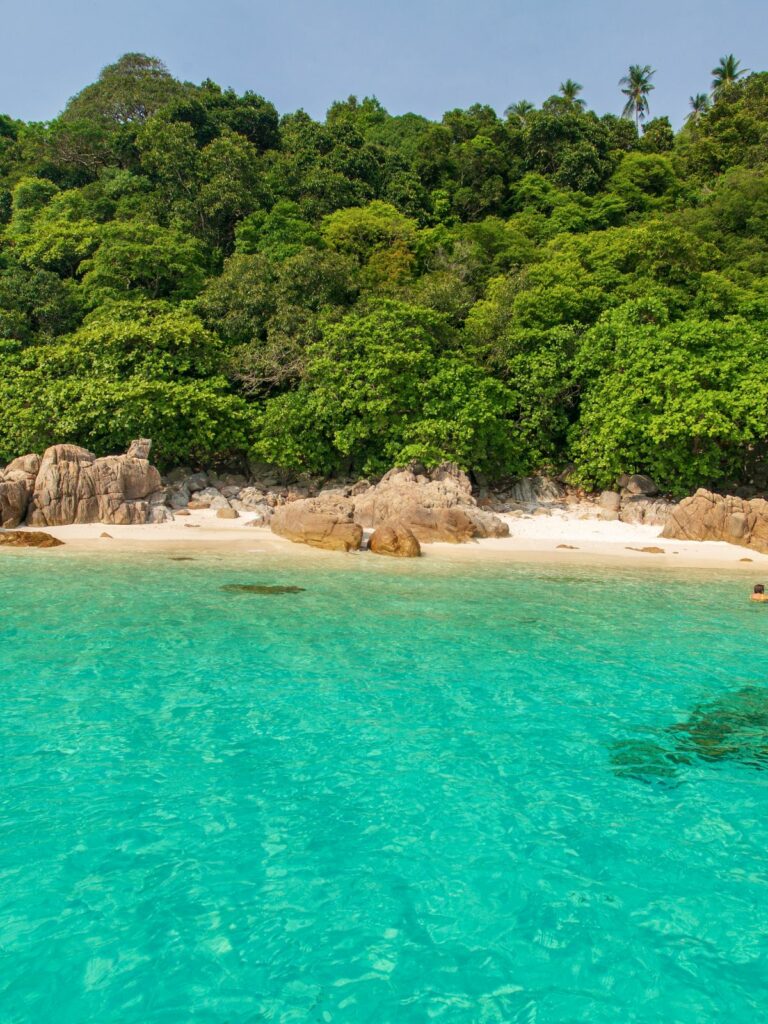
Taman Negara Rainforest
This ancient rainforest is your best bet for wildlife in Peninsular Malaysia, so if Borneo’s not going to work for your Malaysia itinerary, consider booking a guided tour here instead.
You’re likely to see macaques, gibbons, hornbills, kingfishers, eagles, crocodiles, colourful butterflies and tapirs, and if you’re incredibly lucky you might get to spot Asian elephants, Malayan tigers, clouded leopards and sun bears.
You can reach the national park from Kuala Lumpur by a combo of bus, train, taxi or boat, with the journey taking 4-8 hours depending on your chosen mode of transport.
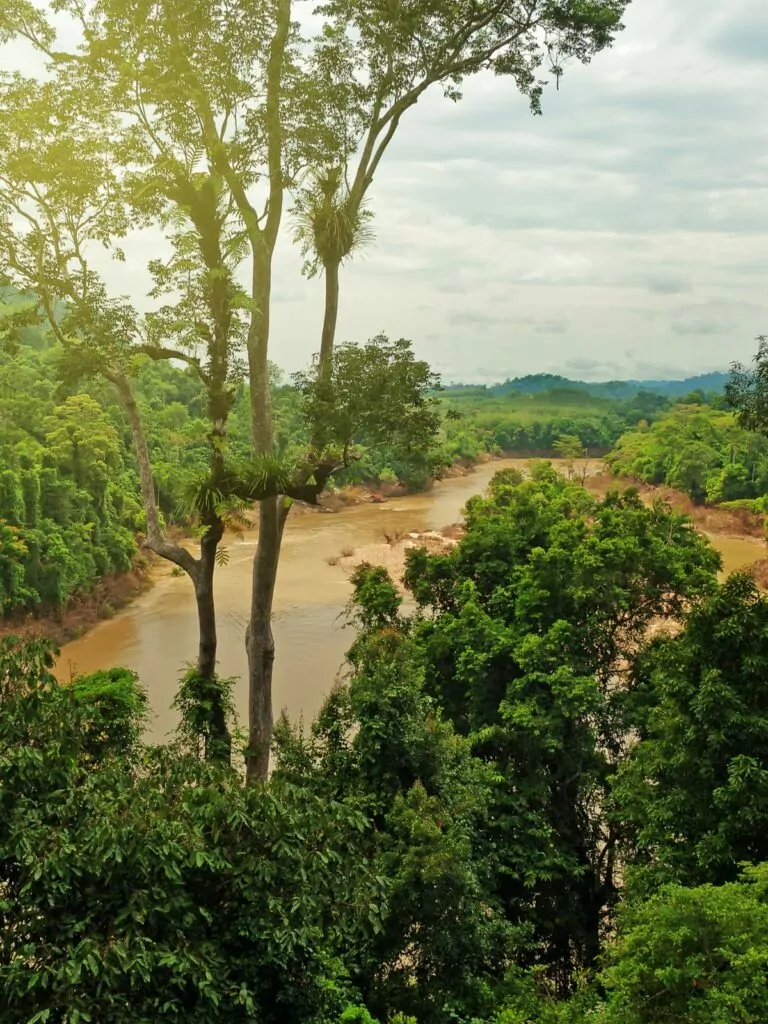
Sarawak
Sarawak is the Malaysian Borneo state that sits south of Sabah, it’s well worth a visit but is difficult to fit into just three weeks in Malaysia and Borneo.
If you have more time to explore, or if you want to drop Peninsular Malaysia’s cultural hot spots of Penang and Ipoh in favour of more off-the-beaten-track experiences, then Kuching, Gunung Mulu National Park and Bako National Park are additions worth considering.
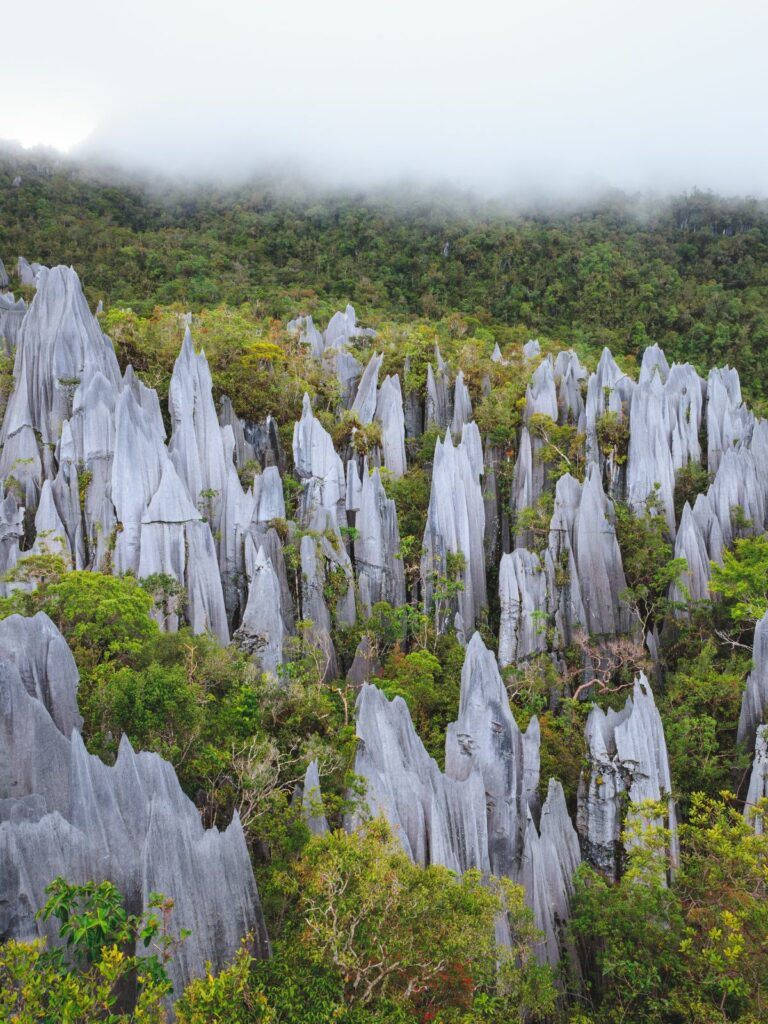
Add on Singapore
Obviously not actually *in* Malaysia, the city-state of Singapore sits at the southern point of Peninsular Malaysia, making it an easily accessible extension of your three week itinerary.
Budget airlines fly between Singapore and all Malaysian international airports constantly, or from Kuala Lumpur you can catch a bus (5-6 hours) or a train to Johor Bahru and then switch for the final journey to Singapore (7-10 hours).
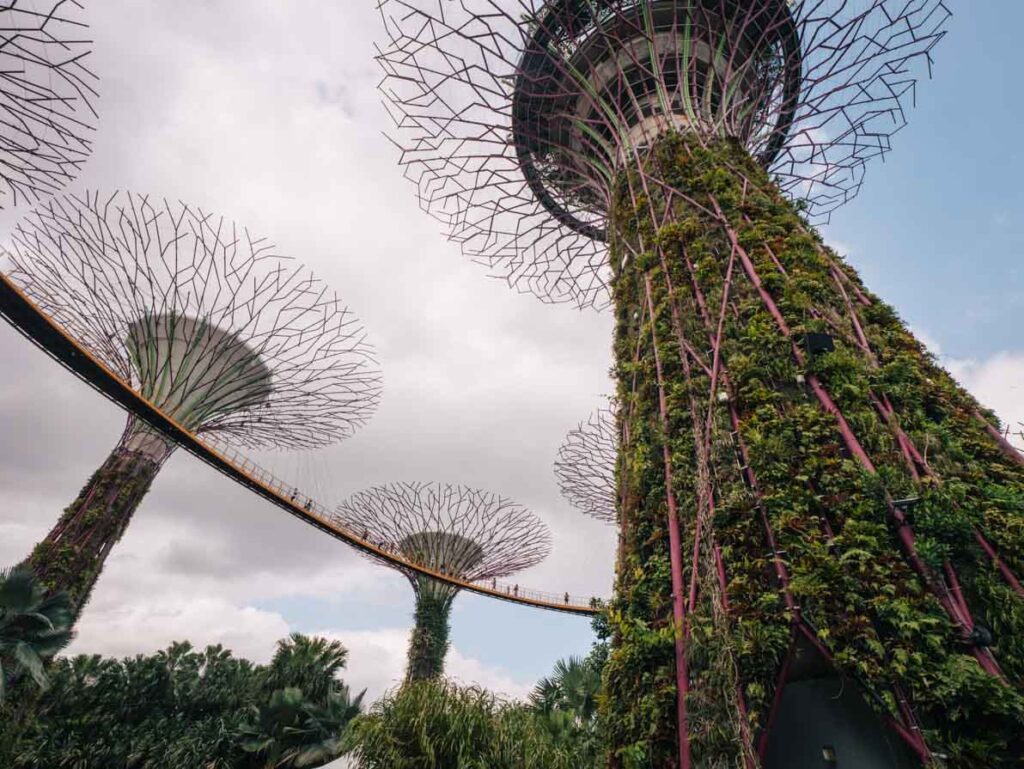
3 week Malaysia itinerary FAQs
Is Malaysia safe for solo female travellers?
Malaysia is generally considered safe and welcoming for solo female travellers, and I didn’t have any safety concerns during my time there, but there are a couple of specific things I want to mention 👇🏼
⚠️ Sabah’s travel warnings
The east coast of Sabah, including Semporna and Sipadan, have had past issues with piracy, which has resulted in travel warnings from some governments that are still in place, despite the last incident happening back in 2016. I’ve explained this and how it can impact your trip in more detail in my two week Borneo itinerary.
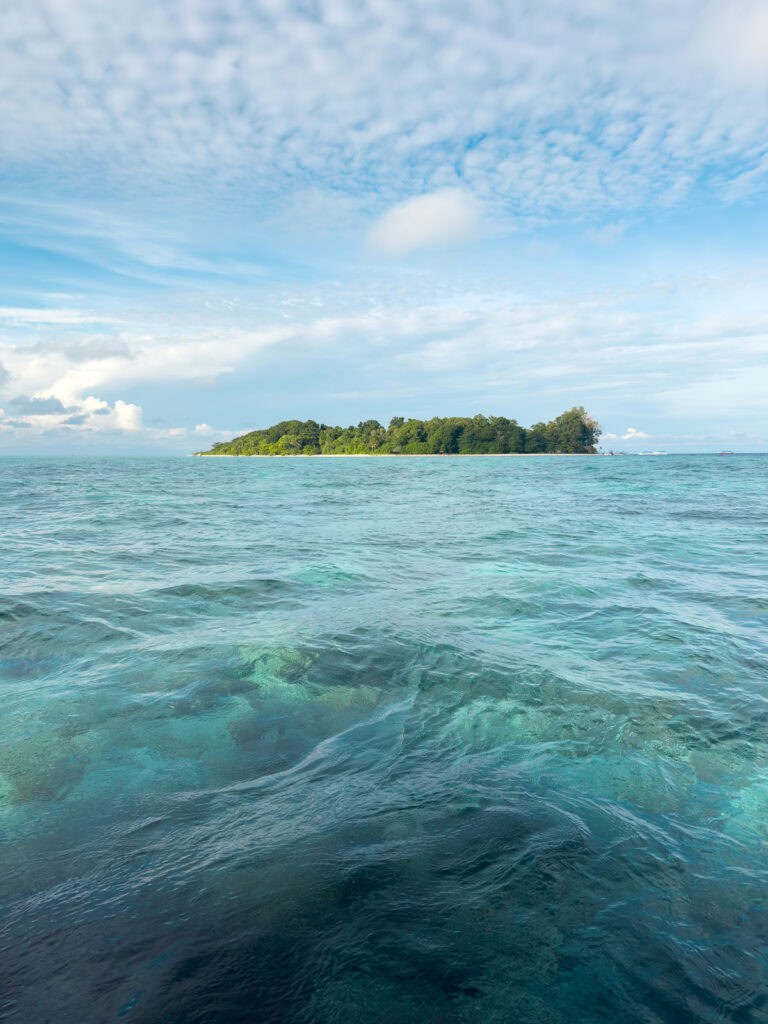
🏮 Kuala Lumpur’s markets at night
The only time I felt a little uncomfortable as a solo female traveller in Kuala Lumpur was at Jalan Alor Food Street at night, it was just so hectic I got overwhelmed with the noises, smells and bright lights, and because I was overwhelmed I probably drew attention to myself.
Be prepared for a bit of chaos, keep your belongings secure because pickpockets can target this area due to the crowds, and consider booking a food tour to experience it in a less stressful way haha.
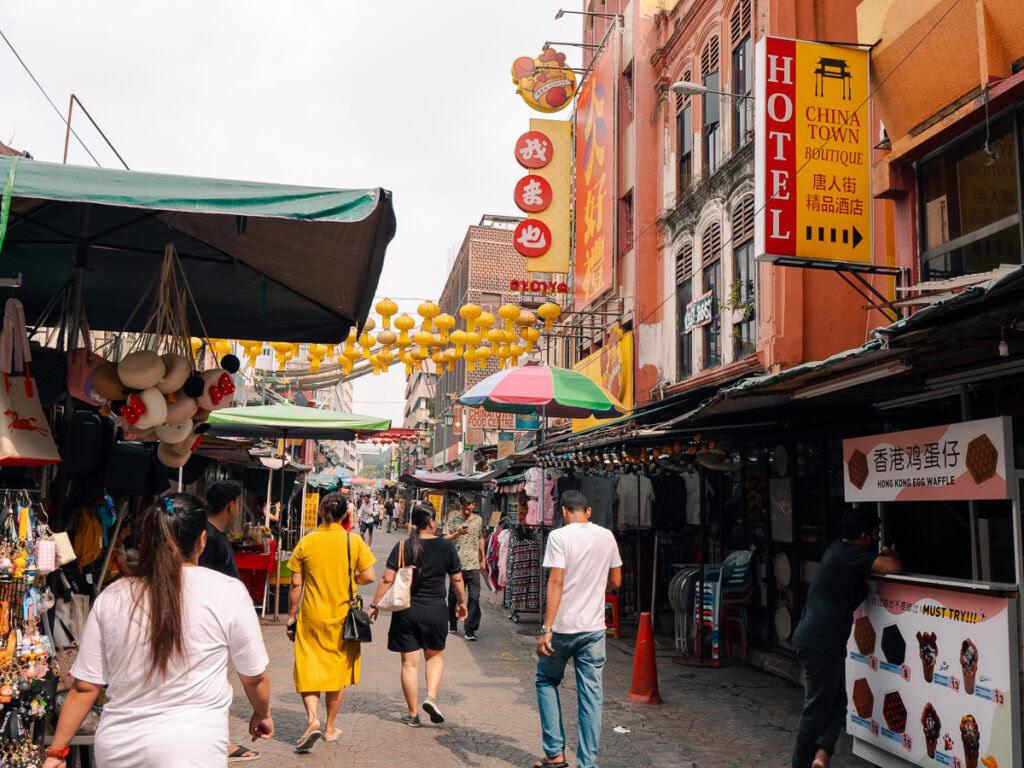
👗 Appropriate clothing
Malaysia is an Islamic country and it’s important to dress and act modestly, both to respect the people and places you visit, and to avoid unwanted attention.
Touristy places like KL and George Town aren’t super conservative, and Borneo’s coastal areas are also quite laid back, but in smaller towns, villages or anywhere with temples, you’ll be expected to cover your shoulders and knees.
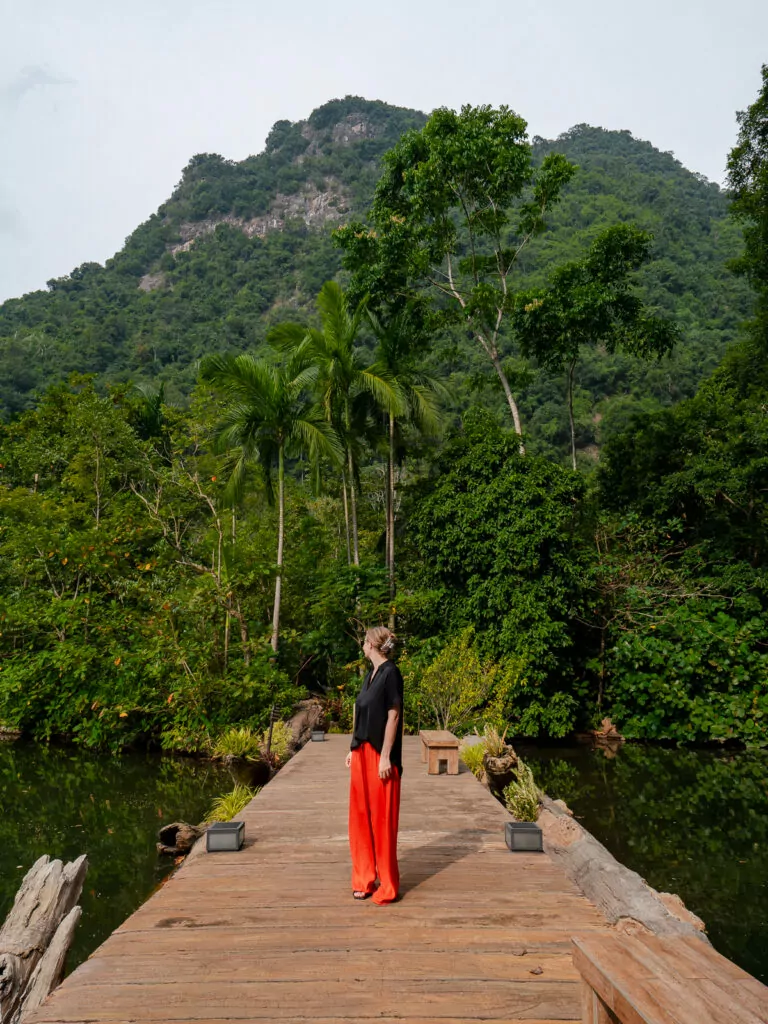
Is three weeks in Malaysia enough?
Spending three weeks in Malaysia is enough to experience a bunch of the country’s highlights, from sleek cities to cultural capitals to wildlife moments you’ll never forget. This itinerary isn’t too rushed, but if you’d like to travel at a slower pace then simply drop one of the stops altogether and you’ll gain a couple of extra days.
What to do with two weeks in Malaysia
If you’ve just got time for a two week Malaysia itinerary, I’d suggest:
- 2-3 days in Kuala Lumpur
- 1 day in Ipoh
- 2-3 days in Penang
- Fly to Kota Kinabalu and join the 8 day Sabah G Adventures tour, which covers Kinabatangan River, Sepilok and a turtle conservation island off Sandakan
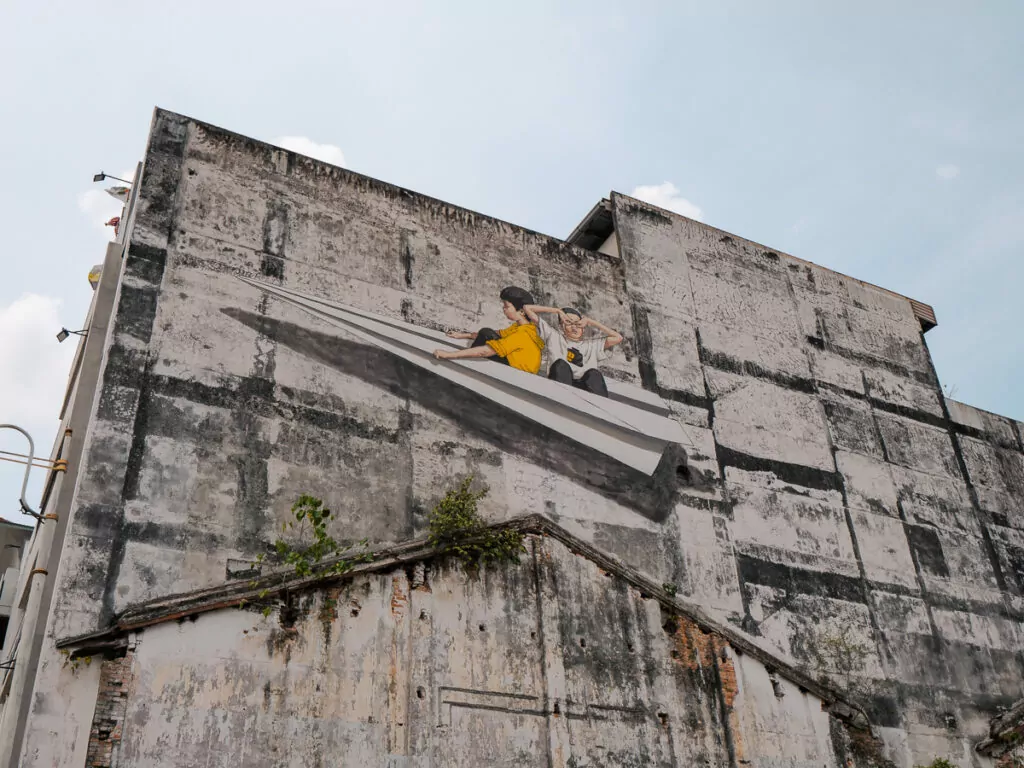
What to do with one week in Malaysia
If you’re limited to just a week in Malaysia, you’ll want to stick to either Peninsular Malaysia or Malaysian Borneo.
With one week in Peninsular Malaysia, you could do:
- 2-3 days Kuala Lumpur
- 2 days Ipoh
- 2-3 days Penang
Or with one week in Malaysian Borneo, you could do the G Adventures Sabah tour (8 days in total), or just fly into Sandakan and spend your time in Sepilok, Kinabatangan River, and either the islands off Sandakan or fly to KK to snorkel in the Tunku Abdul Rahman Marine Park.
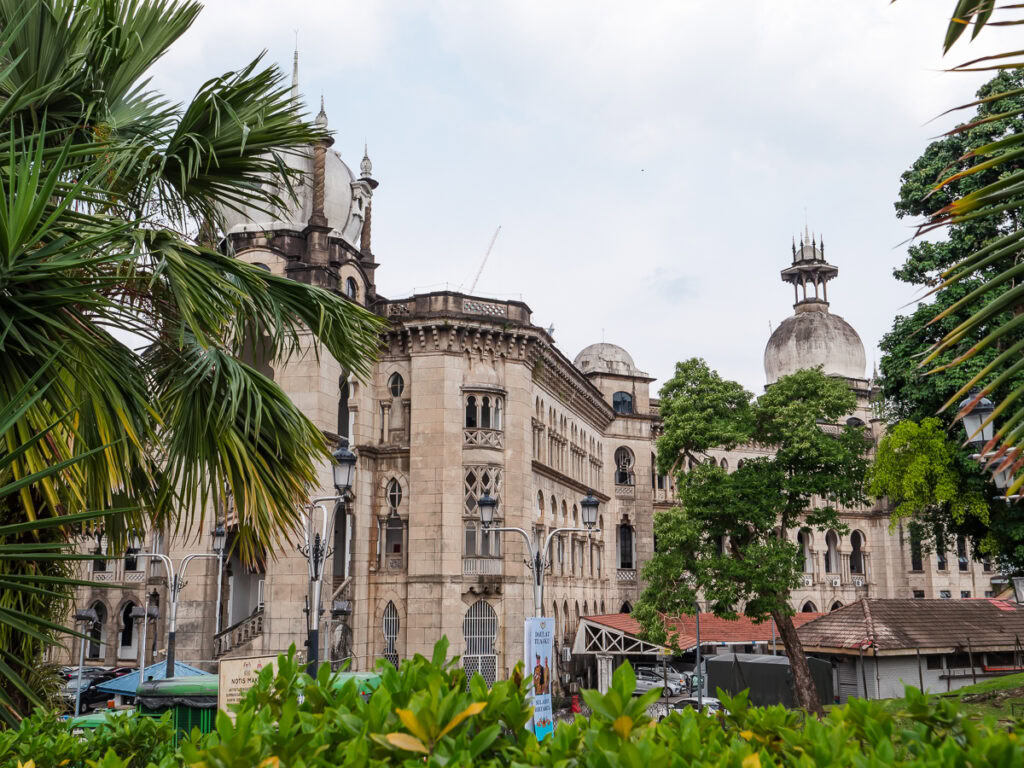
What should I pack for three weeks in Malaysia?
- Lightweight, breathable clothing, it’s humid AF
- Modest clothing, including a scarf to cover your shoulders for temple visits
- Waterproof jacket
- Swimwear
- Good walking shoes for jungle treks
- A reusable drink bottle
- High SPF sunblock
- Insect repellent
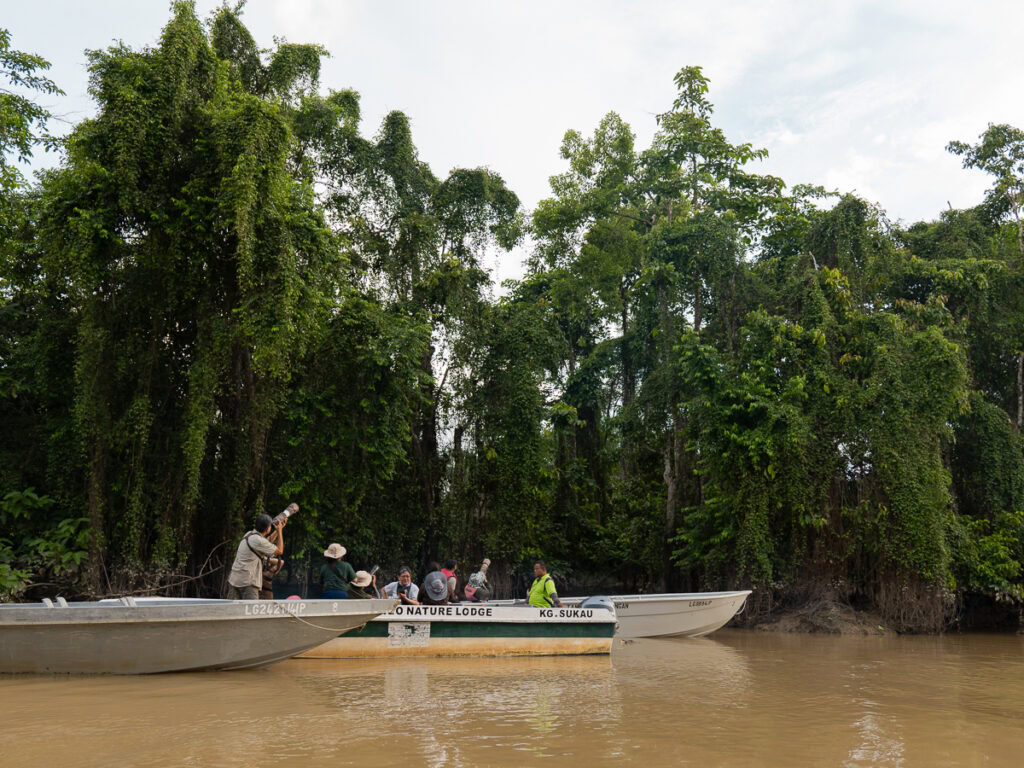
My toxic trait is that I can’t write a single blog post less than 6000 words 🙃 if you’ve made it to the end then I hope I’ve helped you figure out your perfect 3 week Malaysia itinerary!
If you have any questions then as always just pop them in the comments, and I’ll get back to you as soon as I can.
Safe travels!
OTHER MALAYSIA TRAVEL GUIDES & ITINERARIES:
- The perfect two week Borneo itinerary
- Why you should add the world’s only dive rig to your bucket list
- The ideal Borneo wildlife tour: Sabah with G Adventures
- Solo travel in Kuala Lumpur: All you need to know
OTHER SOUTHEAST ASIA TRAVEL GUIDES & ITINERARIES:
- How to spend three weeks in Vietnam
- How to spend three days in Hanoi, Vietnam
- A guide to solo travel in Bangkok
- The ultimate guide to Hoi An’s tailors
MY GO-TO TRAVEL PLANNING RESOURCES
Flights ✈️ I use Skyscanner to find the best flights for my trip and then I’ll always book direct with the airline to protect myself from having to deal with dodgy third parties if anything goes wrong.
Trains 🚂 If I’m travelling through Europe, I try to travel by train wherever possible! For an extended trip (2+ weeks) I’ll calculate if a Eurail Pass is worth it, or I’ll book point-to-point tickets through RailEurope or the local train operator.
Accommodation 🛎️ I book almost all of my accommodation through booking.com, they have a user-friendly website + app and many of their options are free cancellation, easily cancelled with a simple click of a button.
Activities 🗽I use GetYourGuide, Klook and Viator to look for activities in the places I visit, or I just Google ‘things to do in [city]’! P.S. If you book anything on Klook you can use the promocode FINDINGALEXXKLOOK to get 10% off
Travel cards 💳 I’m a Wise gal through and through, they’ve been my chosen travel card for more than five years now. You can easily top up your card from your bank account or through Apple Pay, convert your money to local currency, and spend money with minimal fees and the best exchange rates around.
Travel insurance 🩺 I use Cover-More NZ travel insurance for my own trips, I have a comprehensive policy and I’ve only had good experiences with them. Cover-More also has an Australian company, but if you’re from elsewhere then two popular insurance options for global travellers are SafetyWing (cheaper policy, lower coverage) and World Nomads (more expensive but significantly better coverage).
Luggage 💼 I travel with Samsonite Cosmolite suitcases, one 75cm check in bag and a 55cm carry on bag, and I absolutely adore them and will never travel with anything else! They are SUPER lightweight (2.8kg and 1.9kg respectively) so I have much more space for my actual stuff.
Camera gear 📸 I use a iPhone 15 Pro Max for phone photos/videos, and my camera kit includes a Lumix S9 (incredible lightweight full-frame camera, a game changer for travel creators!) with a 20-60mm lens, a Lumix G9 with an 8-18mm and 12-60mm lens, a DJI Mini 3 Pro drone and a GoPro Hero 10. I do all my writing and editing on my ASUS Zenbook 14, it’s lightweight but powerful enough for photo editing and intense blogging sessions.
